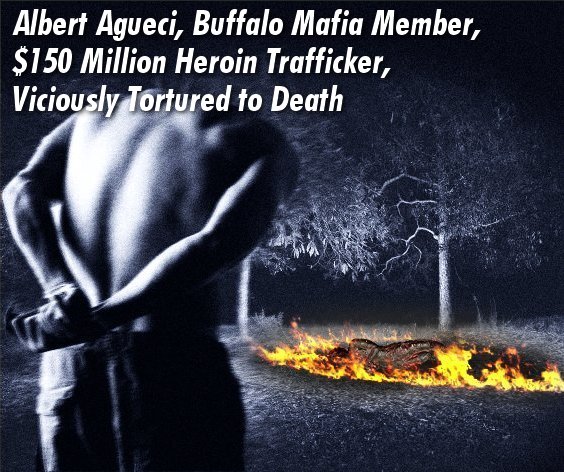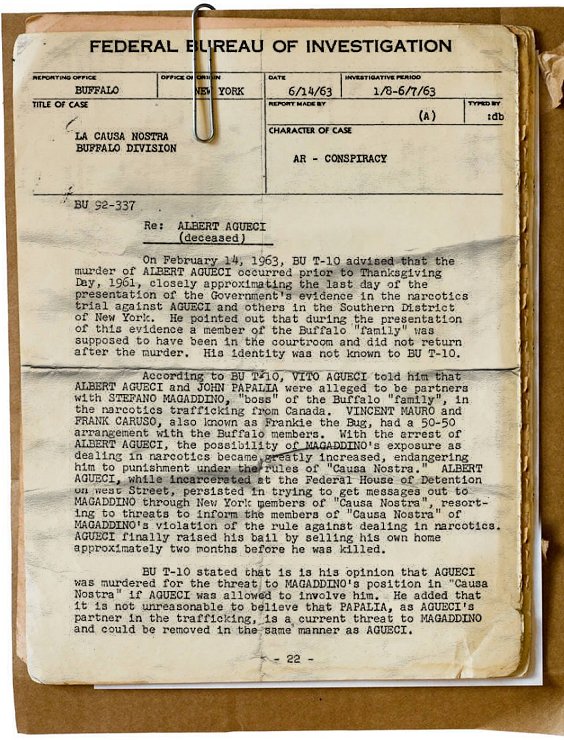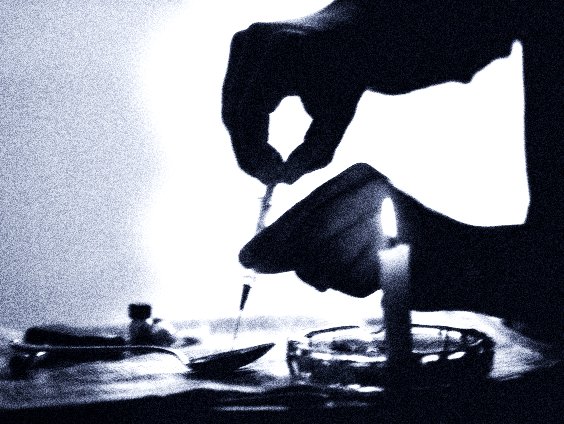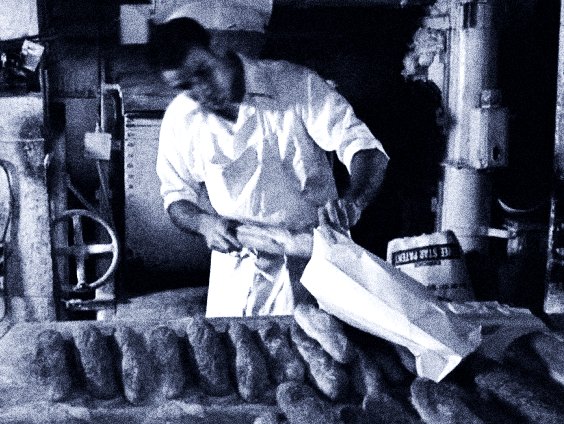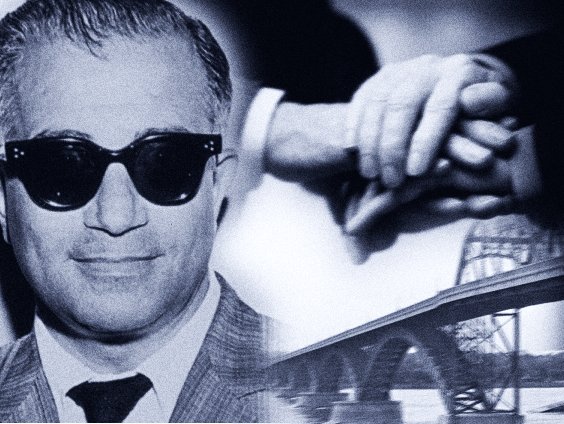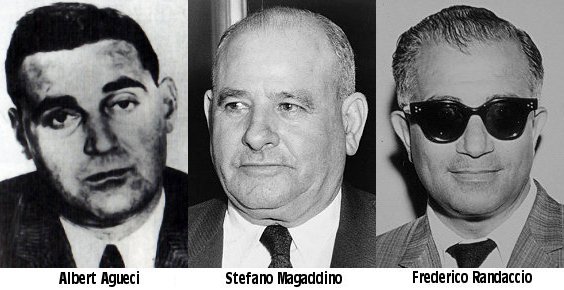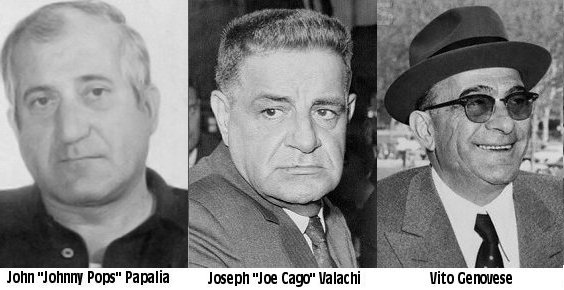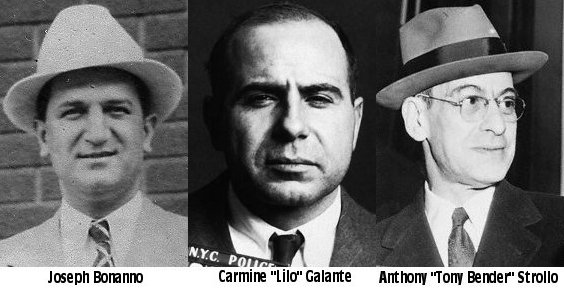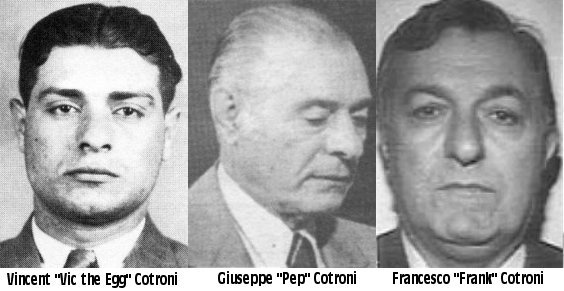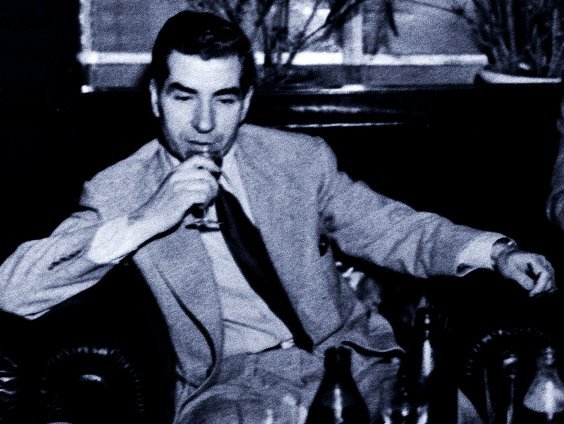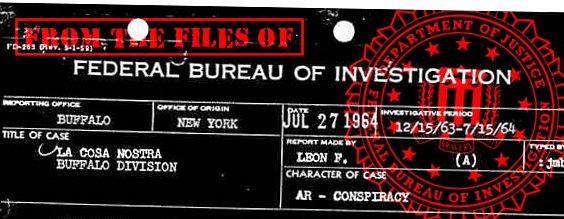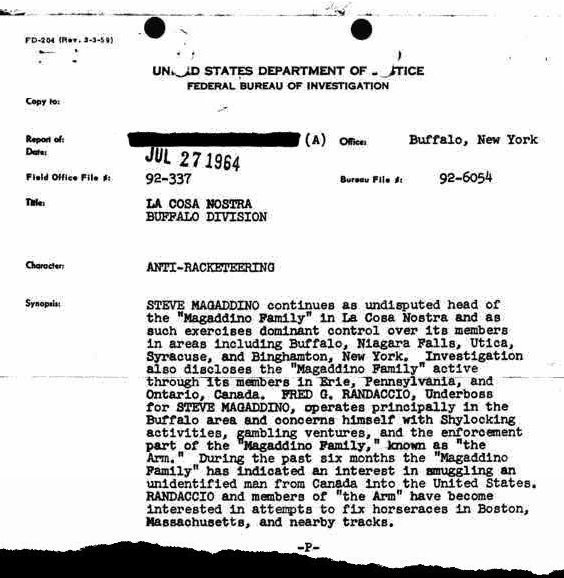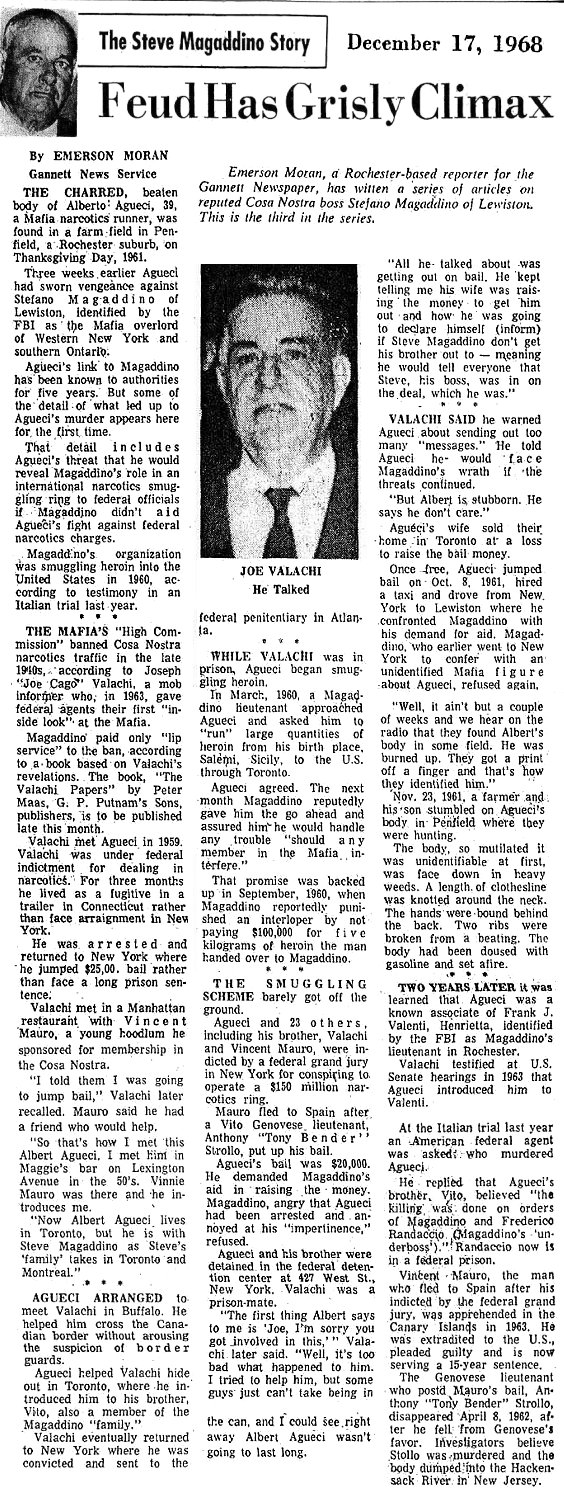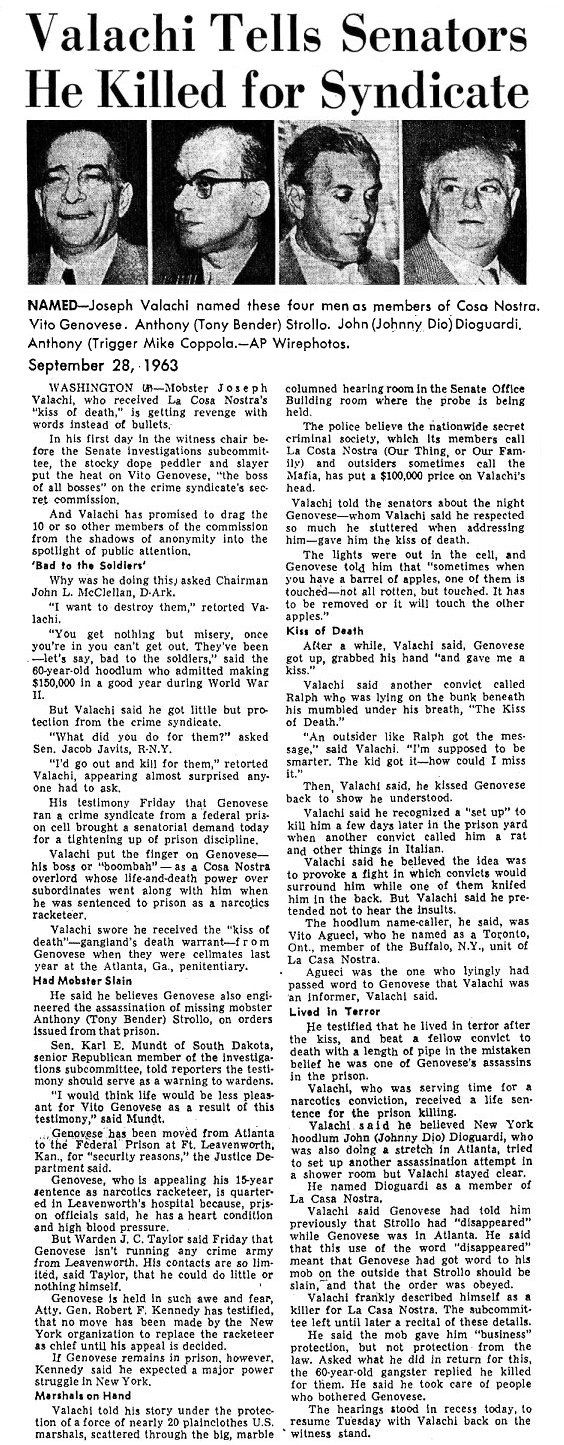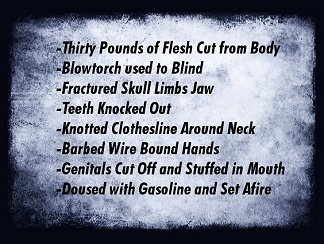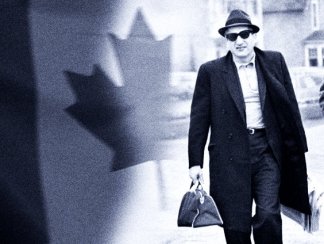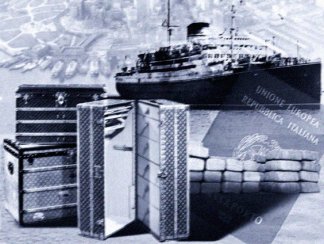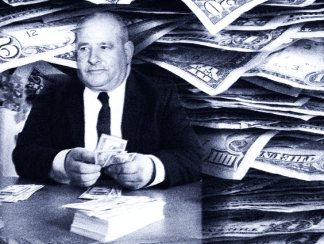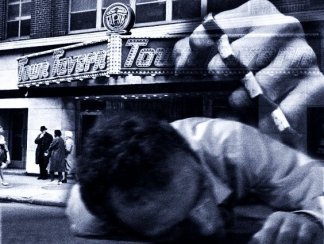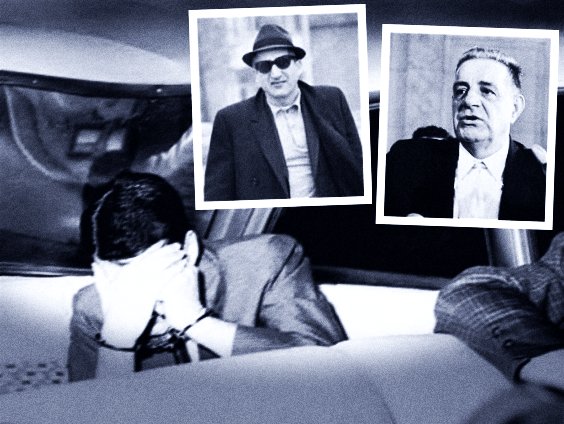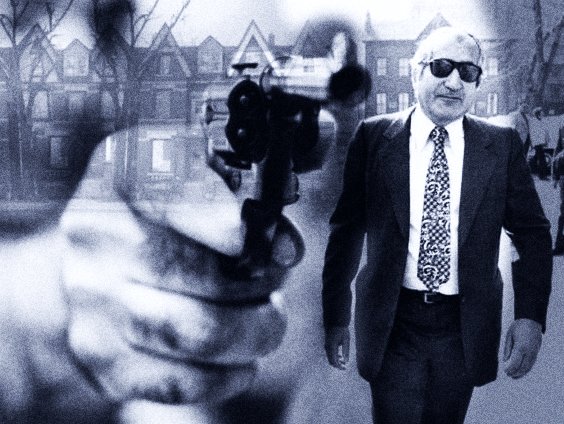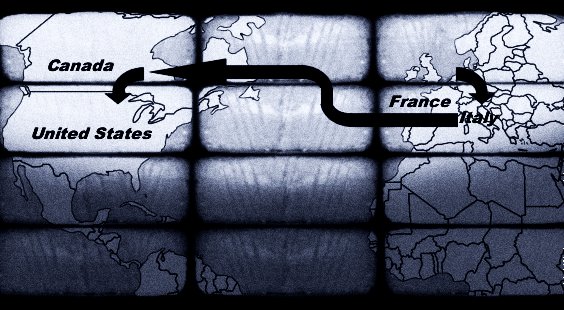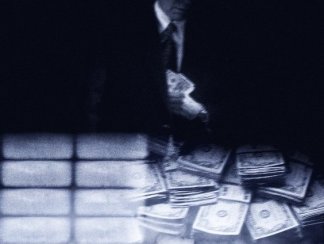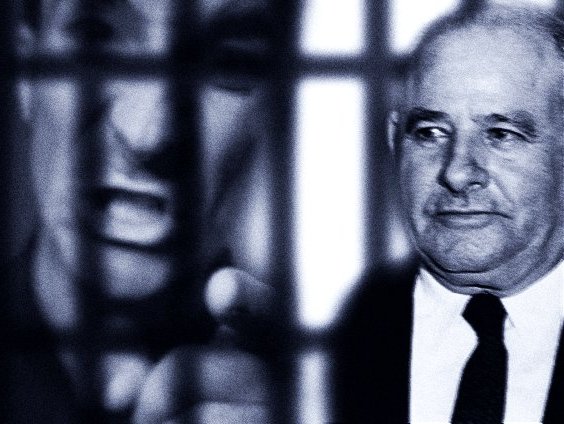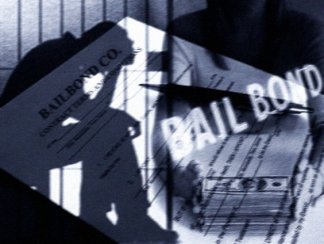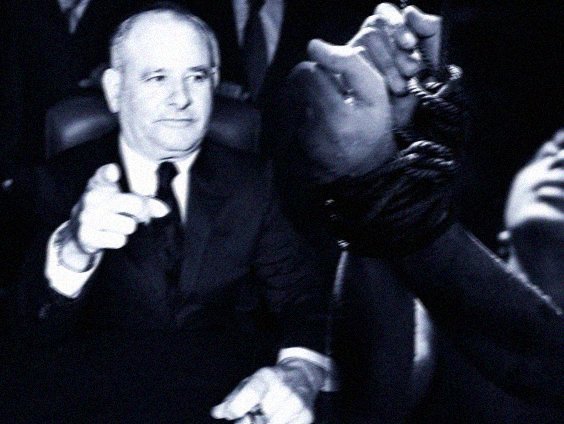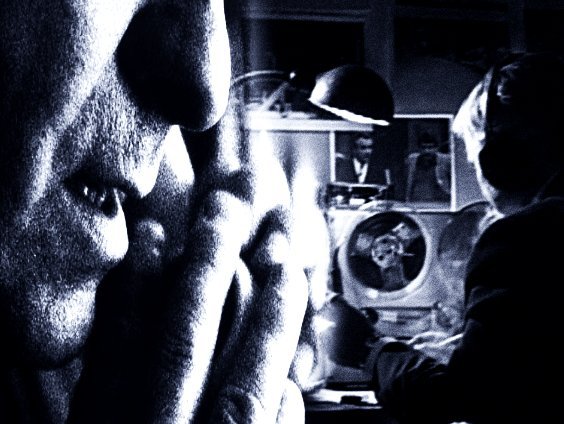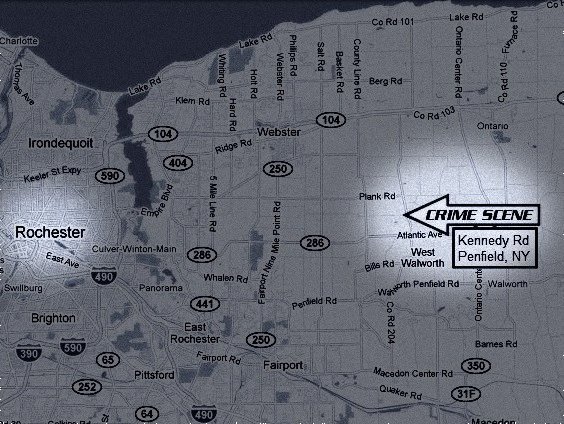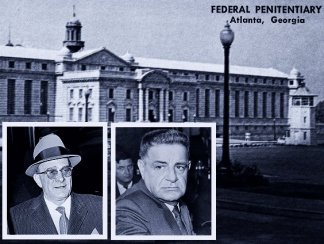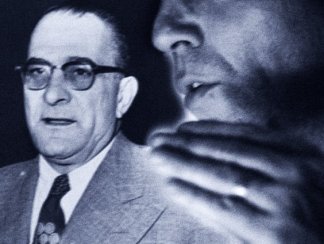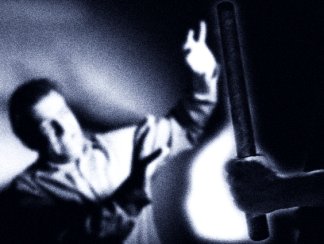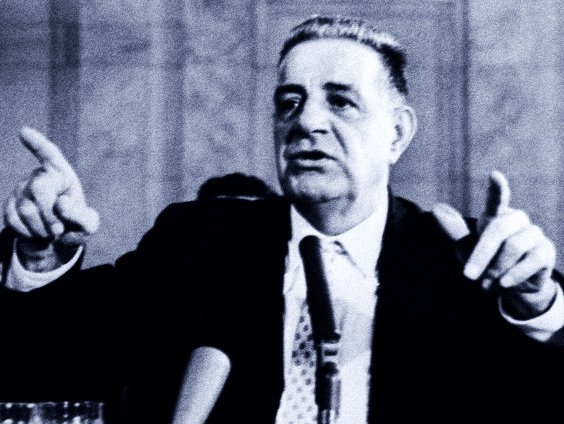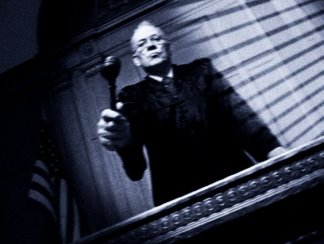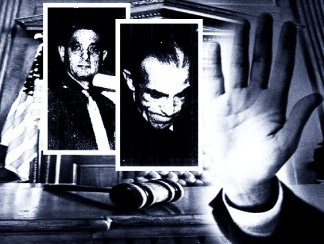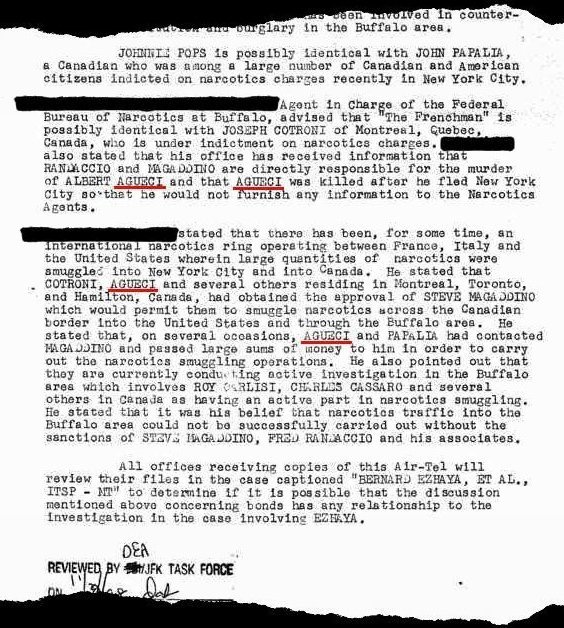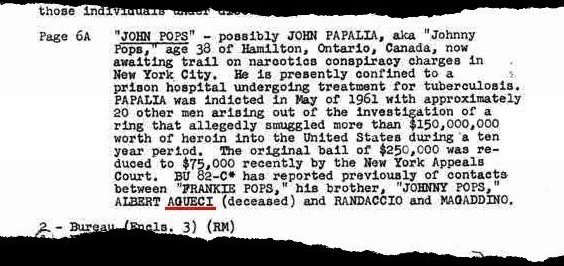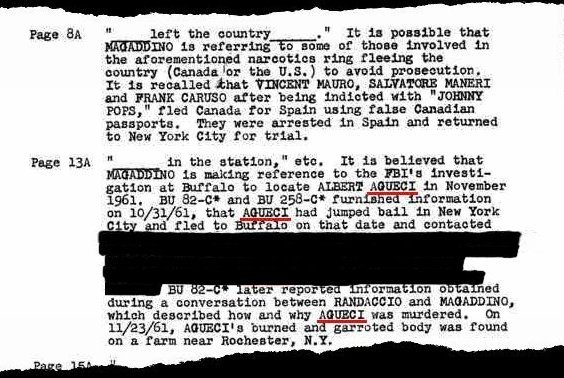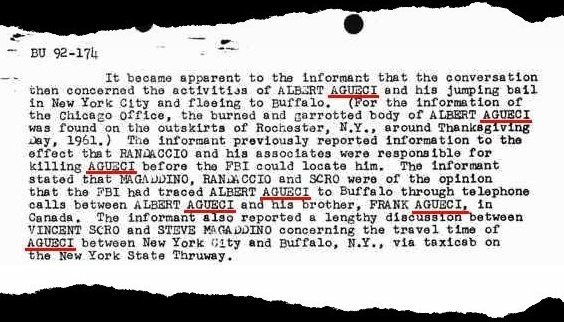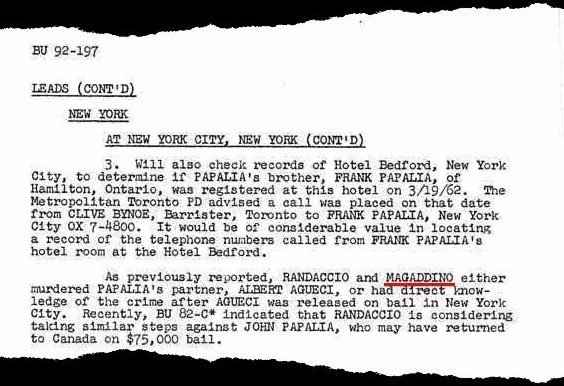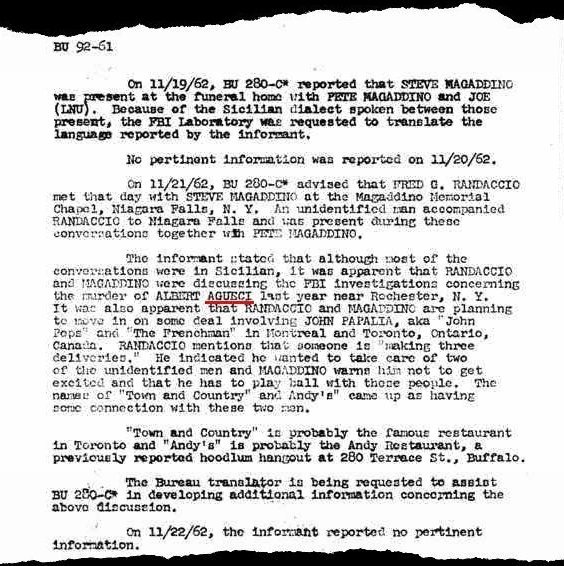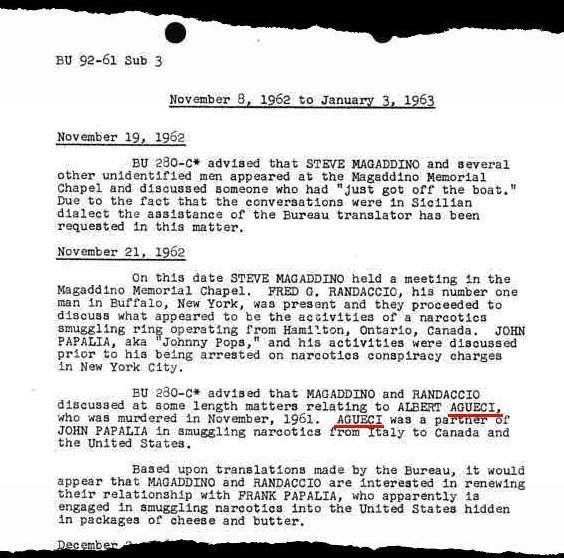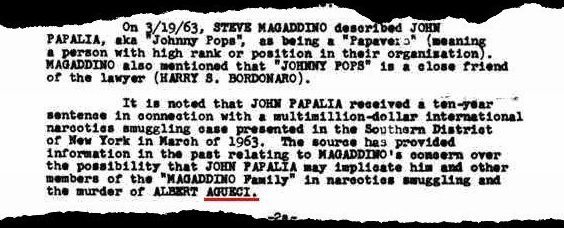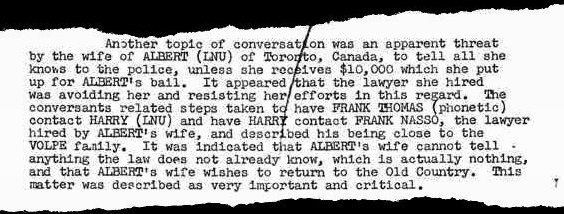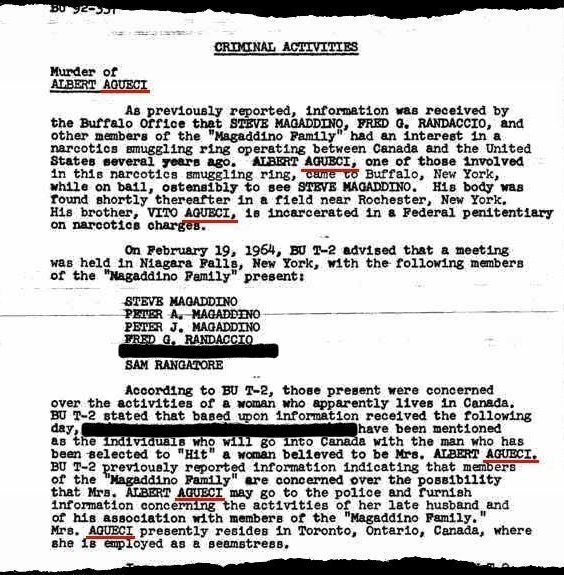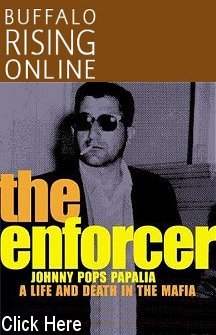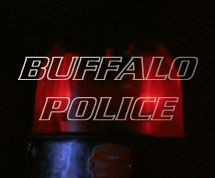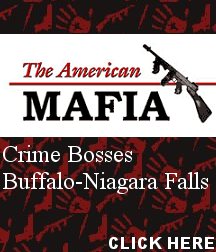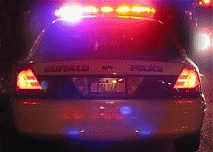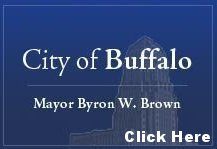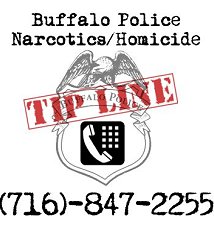|
Federal
Narcotics Case Court
of Appeals
United
States Court of Appeals
310
F.2d 817: United States of America, Appellee. v. Vito Agueci,
Filippo Cottone, Robert Guippone, Luigi Lo Bue, Matthew
Palmieri, Anthony Porcelli, Charles Shiffman, Rocco
Scopellitti, Charles Tandler and Joseph Valachi,
Defendants-appellants
United
States Court of Appeals Second Circuit. - 310 F.2d 817
Argued
October 4, 1962 Decided November 8, 1962
Jerome
Lewis, New York City (Theodore Krieger, New York City, on the
brief), for Filippo Cottone, appellant.
Lawrence
A. Kobrin, New York City, for Rocco Scopellitti, appellant.
Menahem
Stim, New York City, for Joseph Valachi, appellant.
Frances
Kahn, New York City, for Luigi Lo Bue, appellant.
Albert
J. Krieger, New York City, for Charles Shiffman and Charles
Tandler, appellants.
Theodore
Krieger, New York City, for Robert Guippone, Anthony Porcelli
and Matthew Palmieri, appellants.
T.
F. Gilroy Daly, Asst. U. S. Atty., Southern District of New
York, New York City (Vincent L. Broderick, U. S. Atty.,
Sheldon H. Elsen, Arnold N. Enker, Michael F. Armstrong, Peter
K. Leisure, Asst. U. S. Attys., on the brief), for appellee.
Before
LUMBARD, Chief Judge, and FRIENDLY and KAUFMAN, Circuit
Judges.
KAUFMAN,
Circuit Judge.
1
The
ten defendants before us appeal their convictions for
violation of the federal narcotics laws, 21 U.S.C. §§ 173,
174. The defendants were sentenced to imprisonment for periods
ranging from five years to twenty-five years,1
after a two-month trial before a jury in the Southern District
of New York. The indictment, filed on May 22, 1961, contained
thirty counts. The first count charged all of the appellants
and several others with conspiracy to violate the narcotics
laws, commencing in September 1958 and continuing until May
1961; counts two through thirty separately charged various
defendants with substantive violations. Several individuals
were named in the indictment as coconspirators but not as
defendants2
and other coconspirators named as defendants were not tried
below for various reasons.3
Michael Maiello was also convicted but died while his appeal
was pending.
2
At
the trial, the Government's case depended principally upon the
testimony of two witnesses, Salvatore Rinaldo and Matteo
Palmeri, who had not been named as defendants in the
indictment but had been charged with participation in the
conspiracy. Their testimony was offered to establish that the
appellants and numerous other persons had engaged in a single
conspiracy to import from Italy large quantities of heroin,
which they adulterated, packaged, distributed, and sold in the
United States. The conspiracy, defined generally, involved the
importation of narcotics into this country by concealed
packages hidden in valises or false-bottom trunks, most of
which were unwittingly brought to New York piers by Italian
immigrants. These immigrants were requested to bring the
trunks and valises to this country by a travel agent in Italy,
purportedly as a favor to some friends here. Whenever this
method proved for some reason unsatisfactory, one of the
appellants would travel abroad in order personally to assure
the success of the venture. For convenience, we may refer to
the small body of coconspirators who initated the various
importations and the subsequent distributions and sales of the
narcotics as the "executive group." The Government's
witnesses established that the members of this group were
Albert Agueci,4
Frank Caruso, Vincent Mauro, and John Papalia, none of whom
are appellants, and Vito Agueci, Luigi Lo Bue, and Joseph
Valachi, appellants here. In addition to these men, appellant
Rocco Scopellitti was also implicated in the importation
scheme, for he was alleged to have personally imported heroin
into this country in August 1960.
3
Upon
ascertaining the precise dates of the arrival in New York of
the narcotics being imported, one of the members of the
executive group would contact Matteo Palmeri, the Government
witness, who ran a bakery in Brooklyn.5
Palmeri, using his bakery truck, would drive to Pier 84 in
Manhattan, seek out the immigrant who was bringing the trunk
or valise containing the narcotics and identify himself as a
friend of the Italian travel agent, and return with the trunk
or valise to his bakery. On one occasion, when Palmeri's truck
was out of order, he enlisted the aid of appellant Filippo
Cottone. Palmeri was often assisted by Salvatore Rinaldo, the
other chief witness for the Government. Rinaldo would perform
a test on the white powder contained in the hidden packages to
assure that it was heroin. The packages of narcotics were at
first hidden in Palmeri's bakery, and later in Rinaldo's home
in Mount Vernon.
4
Until
October 21, 1960, when they were arrested, Palmeri and Rinaldo
were the primary distributing agents for the conspiracy. They
would be contacted by one of the members of the executive
group and instructed to deliver a specified quantity of
narcotics to a specified individual at a specified time. Thus,
in the month of July 1959, Caruso told Rinaldo to meet with
appellant Matthew Palmieri in order to consummate a sale. In
December 1959, Valachi introduced appellant Anthony Porcelli
to Rinaldo for a like purpose, and in April 1960, Porcelli
introduced Rinaldo to another appellant, Ralph Guippone. The
three coconspirators — Rinaldo, Porcelli, and
Guippone — would adulterate the heroin in Rinaldo's
home, sell the product to other individuals named in the
indictment but not here on appeal, and share in the proceeds
of the sale. In May of 1960, at a racetrack rendezvous, and at
the instructions of Caruso, Rinaldo met with appellant Charles
Shiffman who was later instrumental in arranging sales of
narcotics from Rinaldo to appellant Charles Tandler.
5
This,
in skeleton outline, is the manner in which the alleged
conspiracy operated and the manner in which each of the
appellants was implicated. This information will be helpful in
giving form to the narrative of specific events, which
follows.
6
The
indictment charges a continuing conspiracy from September 1958
until the date of its filing, May 22, 1961. The testimony of
Government witnesses Palmeri and Rinaldo establishes the
sequence of events through October 21, 1960, when both were
arrested. In October of 1958, Matteo Palmeri met Albert Agueci,
one of the members of the executive group, in Brooklyn; in
response to questioning Palmeri indicated that he would be
interested in participating in a plan to smuggle diamonds. The
following month, appellant Luigi LoBue appeared at Palmeri's
bakery in Brooklyn, and he informed Palmeri that he was aware
of his interest in diamond smuggling, which information had
been conveyed by Albert Agueci. In May of 1959, LoBue again
contacted Palmeri, telling him to go to Pier 84 in order to
pick up a valise from a named passenger and to identify
himself (Palmeri) as a friend of Salvatore Valenti, the
Italian travel agent who was allegedly responsible for
"planting" the valises with Italian immigrants.
Palmeri did so and delivered the valise into LoBue's hands at
the bakery. Some days later, LoBue returned to the bakery with
five packages which he gave to Palmeri to be hidden. Soon
after, Palmeri brought those packages, on LoBue's
instructions, to Vincent Mauro, who, along with LoBue, is
alleged to have been a member of the executive group. Mauro,
over the course of a few days, paid $15,000. to Palmeri, who
in turn passed the money on to LoBue; Palmeri was rewarded for
his efforts with $300.
7
In
July 1959, LoBue told Palmeri that he had received a letter
from Italy and that Palmeri should report to the pier and meet
the passenger named in the letter, procure the valise, and
return to the bakery. Palmeri did so, and upon observing LoBue
remove a blanket from the valise, cut it open and withdraw
packages of white powder, Palmeri was told by LoBue that they
were dealing not in diamonds but in narcotics. Again, Palmeri
was requested to hide the packages, and he again made another
sale at Mauro's direction, receiving $15,000. That month,
Palmeri was introduced to Salvator Rinaldo, the other chief
Government witness, and from that time Palmeri delivered
heroin to Rinaldo, in order to facilitate the latter's sales.
The first such sale was from Rinaldo to defendant Matthew
Palmieri, in exchange for $8500., which money Rinaldo
transmitted to Caruso. This incident occurred in July 1959.
Another sale on precisely the same terms was carried out
between Rinaldo and appellant Palmieri on March 21, 1960.
8
Rinaldo's
position as central distributor became even more secure when,
in December 1959, Mauro, of the executive group, told
appellant Valachi, another member of that group, that
narcotics were to be picked up from Rinaldo. Valachi met with
Rinaldo that month, and introduced him to appellant Anthony
Porcelli; Valachi said that Porcelli was working for him and
that it would be Porcelli who would pick up narcotics from
Rinaldo in the future. The next morning, with Valachi standing
nearby, Rinaldo delivered a package of heroin to Porcelli,
which was paid for over the course of two or three weeks.
Rinaldo turned over the proceeds of the sale to Caruso. In
January of 1960, Rinaldo was introduced to two additional
contacts6
to whom further sales were made.
9
In
late January, LoBue notified Palmeri, the baker, that a third
shipment of narcotics was arriving in a valise carried by a
named Italian immigrant on March 7, 1960. Palmeri performed
his usual function, retrieved the valise with the hidden
packages of narcotics, and passed these on to Rinaldo, who
tested a sample of the substance from each of the packages. He
found it to be heroin. Soon thereafter, on March 19, Rinaldo
met with appellant Valachi, who informed him that "he was
going away", and that in his absence, Rinaldo should deal
with appellant Porcelli and with one Michael Maiello. Valachi
said that although he was going away, Porcelli and Maiello
would be taking care of him and sharing with him any profits
these two would make on the sale of narcotics. It turned out
that Valachi was indeed "going away" soon, for nine
days later he surrendered to federal authorities on another
charge and was incarcerated in prison.
10
Losing
little time, Porcelli went to Rinaldo's home in Mount Vernon,
in April 1960, and introduced appellant Robert Guippone; he
said that Guippone was one of the men who was carrying on in
Valachi's interest while Valachi was imprisoned. Plans were
made to dilute quantities of heroin with milk sugar, to sell
them, and share the profits. The dilution and sales were made
on several occasions in the months of May, June, August, and
September 1960, and Rinaldo, Porcelli, and Guippone shared in
the handsome profits, with some of the money going, on at
least one occasion, to Caruso. These transactions represent
the eleven substantive counts on which both Porcelli and
Guippone were convicted.
11
At
approximately the same time that Guippone and Porcelli first
met with Rinaldo in April 1960, a meeting of several members
of the executive group took place at a Manhattan restaurant.
They there decided that future narcotic importations would be
in trunks with false bottoms rather than in valises. That
month, appellant Vito Agueci went to Italy, for what he
claimed was a visit to his aged parents. The Government, of
course, places a different interpretation on the facts and
points out that this was not the only purpose to be reasonably
inferred from this trip, for proof was introduced that in May
of that year, Vito Agueci wrote a letter from Italy to Palmeri,
telling him that a trunk and a valise would be brought into
this country on June 2, 1960, and that Palmeri should be there
to pick them up. Rinaldo accompanied Palmeri to the pier at
that time; he later tested the packages secreted in the trunk
and valise and found them to contain heroin, weighing fifteen
kilograms.
12
Notification
of the next shipment came quickly upon the heels of the June 2
importation. In July, Palmeri received a letter from Salvatore
Valenti, the Italian "travel agent", informing him
that appellant Rocco Scopellitti was to arrive from Italy on
August 10. On that morning, Palmeri was contacted by Albert
Agueci, appellant's brother and member of the executive group,
who told him that Scopellitti worked for him and was to be
fully trusted. At the pier, Scopellitti and Palmeri loaded the
trunk into Palmeri's truck and drove back to the bakery. En
route, Palmeri asked Scopellitti when he was returning to
Italy and Scopellitti replied that he would go whenever Albert
Agueci wanted him to pick up another trunk. When they reached
the bakery, they were greeted by Rinaldo, who had earlier been
instructed by two members of the executive group that he was
no longer to acccompany Palmeri to Pier 84 but was to wait for
him at the bakery. Palmeri introduced Scopellitti, telling
Rinaldo that Scopellitti was "all right", and that
he had made the trip from Italy with the trunk; Scopellitti,
to dispel any further doubt, said "Don't worry. I know
what it's all about." The three proceeded to rip open the
false bottom of the trunk which revealed packages of heroin.7
Rinaldo took the packages to his home; he tested them and
found them to contain heroin.
13
While
these two shipments of June and August 1960 were being planned
and consummated, Rinaldo was making further sales at the
behest of the executive group. In late May, Caruso told him to
meet with appellant Charles Shiffman at the Roosevelt Raceway,
which Rinaldo did. A night or two later, Rinaldo was
introduced to appellant Charles Tandler. It was there agreed
that Shiffman would transmit certain code phone calls to
Rinaldo, whereupon Rinaldo would meet with Tandler at an
appointed rendezvous for the purpose of selling him narcotics.
Pursuant to this plan, Rinaldo delivered three kilograms of
heroin to Tandler shortly after this meeting at the racetrack.
Three kilograms were again delivered to Tandler on August 13
and four more in early October. On October 10, Shiffman and an
associate paid Rinaldo $25,200 for the last sale to Tandler,
and Rinaldo turned the money over to Caruso.
14
The
fifth shipment of narcotics was again preceded by a letter
from Italy, informing Palmeri that a trunk would arrive on
September 2. Palmeri drove to Pier 84 but was unable to claim
the trunk because he could not find the immigrant who had
shepherded it from Italy. After some frantic phone calls and
some impatient days of waiting, it was finally learned that
the claim check and the keys to the trunk could be found at a
given address in Garfield, New Jersey. Palmeri procured the
check and the keys, and was prepared to set out for the pier
when he found that his truck was not in working order. Albert
Agueci previously had informed Palmeri that in case of such
difficulties he should contact Filippo Cottone, one of the
appellants. Palmeri did so and told Cottone that he needed his
help to get down to the pier to pick up a trunk containing
narcotics; he promised Cottone $300 for his services. En route
from the pier back to the bakery, Cottone was critical of
Palmeri and his associates for the mishandling of the pickup
of the trunk. "I can't understand * * * how you people do
things, it is ridiculous"; he added that there had been
no trouble with the other shipments. At the bakery, where
Rinaldo was again waiting, Cottone was introduced by Palmeri,
who endorsed him as being "all right". The three
ripped open the trunk's false bottom, which contained ten
packages of heroin. Cottone took away one of the blankets in
which three kilograms of heroin were concealed but which
Palmeri had overlooked; these were soon retrieved by Palmeri.
Rinaldo again tested samples and found heroin.
15
Vito
Agueci, during the month of September 1960, took a second trip
to Italy. From there, he notified Palmeri that another
shipment was due October 21st, and Palmeri in turn notified
Rinaldo. Rinaldo relayed the message to Porcelli in a
conversation with him in Mount Vernon. Shortly before the
narcotics were to arrive, Caruso of the executive group
informed Rinaldo that the woman who ran Palmeri's bakery was
growing suspicious; all future imported trunks were therefore
to be taken directly from the pier to Rinaldo's house. Palmeri
was informed of the new routine, and on October 21 both he and
Rinaldo went to Pier 84 and picked up what was to be the last
shipment of narcotics. It was en route to Rinaldo's home in
Mount Vernon that both men were arrested by Westchester County
police and federal narcotics agents. The trunk they were
transporting was found to contain ten kilograms of what was
determined by United States Government chemists to be heroin.
16
We
shall first consider those contentions raised by the
appellants which affect all or several of them; we shall then
proceed to discuss those contentions specifically raised on
behalf of particular defendants.
17
THE
CONSPIRACY INSTRUCTION
18
The
appellants challenge the propriety of the trial court's
instructions regarding the scienter necessary to a finding of
conspiracy to violate the federal narcotics law, specifically,
21 U.S.C. § 174. Even assuming that defendants may be heard
to complain despite their failure to call the alleged error to
the judge's attention, see Screws v. United States, 325
U.S. 91, 107, 65 S.Ct. 1031, 89 L.Ed. 1495 (1945);
United States v. Atkinson, 297
U.S. 157, 160, 56 S.Ct. 391, 80 L.Ed. 555 (1936);
United States v. Massiah, 307
F.2d 62 (2d Cir., 1962), we hold that Judge
Herlands adequately covered in his charge all the elements
necessary to warrant a finding of guilt for participation in a
narcotics conspiracy. He charged as follows:
19
"Count
1 of the indictment charges that each of the defendants on
trial conspired to violate the Federal Narcotic Laws. In order
to convict under the first count of the indictment, you would
have to find:
20
"First:
that sometime between September 1, 1958 and May 22, 1961, in
the Southern District of New York, a conspiracy to violate the
narcotic laws existed between any one of the defendants on
trial and any other defendant, either on trial or not on
trial, or any co-conspirator named in the indictment.
21
"Second:
you would have to find that it was part of this conspiracy to
do any one of the following:
22
"a.
Unlawfully import and bring large amounts of narcotic drugs
into the United States from Italy; or "b. To receive,
conceal, buy, sell and facilitate the transportation,
concealment and sale of large amounts of narcotic drugs after
they had been imported and brought into the United States,
knowing that the said narcotic drugs had been brought into the
United States illegally; or
23
"c.
To dilute, mix and adulterate large quantities of the said
narcotic drugs prior to distribution.
24
"Third:
In addition to your finding that there was a conspiracy, and
that it was part of the conspiracy to do one of these three
things just enumerated, you would have to find that at least
one of the 14 overt acts charged in the indictment was
actually committed * * *.
25
"The
fourth and final element you would have to find as to each of
the defendants is that he knowingly became a member of the
conspiracy." (Emphasis added.)
26
This
instruction made it plain beyond challenge that the crime
charged was a conspiracy to violate the narcotics law and that
requisite to a finding of such violation is knowing
participation in a scheme having as an objective the
importation of narcotics contrary to law, or the knowing
transportation or facilitation of sales of narcotics after
they have been knowingly brought into the country illegally,
or the knowing adulteration of those very narcotics. It is
thus clear that United States v. Massiah, 307
F.2d 62 (1962), recently decided by this Court
(Chief Judge Lumbard dissenting) — even assuming
its correctness — is not in point. The fatal error
in the judge's instruction in Massiah was his failure "at
any point in his charge on the conspiracy count to
instruct the jury that knowledge of illegal importation was a
necessary element of the conspiracy" to violate the
narcotic laws. 307
F.2d 70. (Italics in the original). There the trial
judge devoted his instructions to those elements common to all
criminal conspiracies rather than focussing on the narcotics
aspect of the conspiracy; the latter would have required that
the jury find the defendants to have had knowledge that the
narcotics had been or were to be unlawfully imported.
27
Not
only did the trial judge in Massiah fail affirmatively to
instruct the jury on the element of knowledge, but it was
determined on appeal that certain passages in the court's
discussion of the general law of conspiracy actually
"suggested to the jury that knowledge of importation was
not necessary * * *" (307 F.2d at 70). The majority of
the Court cited this passage from the charge: "One may
become a member of a conspiracy without full knowledge of all
the details of the conspiracy or of all of the
conspirators." Appellants point to a similar passage in
Judge Herlands' charge, but even in that passage, there is an
important difference in emphasis. He stated: "It is not
necessary that one be fully informed as to the details of the
scope of the conspiracy in order to justify an inference of
knowledge on his part." (Emphasis added.) This
instruction pointedly emphasized the need to find that the
defendants charged with conspiracy had knowledge of the
general illicit purposes of importation, transportation, or
adulteration; it cautioned the jury that omniscience regarding
every aspect of the conspiracy was not indispensable to a
finding of such knowledge but that legitimate and reasonable
inferences of such knowledge could be drawn. This is an
unchallenged maxim of criminal law. We recently held in United
States v. Aviles, 274
F.2d 179, 188 (2d Cir.), cert. denied, 362
U.S. 974, 80 S.Ct. 1057, 4 L.Ed.2d 1009 (1960),
that individuals who purchased narcotics from one of the
conspirators were themselves participants in the conspiracy if
"it is clear that they knew the nature of the operation.
Whether they knew its full extent and all of its activities
and actors is immaterial." See United States v. Rich, 262
F.2d 415, 418 (2d Cir., 1959).
28
Upon
a reading of the whole charge, see Carey v. United States, 111
U.S.App. D.C. 300, 296
F.2d 422, 426 (1961), Gilmore v. United States, 256
F.2d 565 (5th Cir., 1958), we are convinced that
the jury had constantly before it the judge's admonition that
the elements set down in 21 U.S.C. § 174, among them
knowledge of the illegal importation, were indispensable to a
finding of guilt on the conspiracy count.
29
EVIDENCE
OF A SINGLE OVERALL CONSPIRACY
30
Several
appellants contend that, although the indictment charged a
single continuing conspiracy from late in 1958 until the time
of the filing of the indictment, there was proof of several
separate and independent conspiracies. The variance in proof
is deemed by these appellants to be of such a serious and
prejudicial nature that reversal is required. See Kotteakos v.
United States, 328
U.S. 750, 66 S.Ct. 1239, 90 L.Ed. 1557 (1946);
United States v. Russano, 257
F.2d 712 (2d Cir., 1958). We find that there was
ample proof to warrant the finding of a single continuing
conspiracy.
31
The
Government's evidence successfully assimilates the conspiracy
before us to the model of the so-called "chain"
conspiracy, so familiar in other narcotic cases. See
Blumenthal v. United States, 332
U.S. 539, 68 S.Ct. 248, 92 L. Ed. 154 (1947);
United States v. Aviles, 274
F.2d 179 (2d Cir.), cert. denied, 362
U.S. 974, 80 S.Ct. 1057, 4 L.Ed.2d 1009 (1960);
United States v. Stromberg, 268
F.2d 256 (2d Cir.), cert. denied, 361
U.S. 863, 80 S.Ct. 119, 4 L.Ed.2d 102 (1959);
United States v. Rich, 262
F.2d 415 (2d Cir., 1959). The "chain"
conspiracy has as its ultimate purpose the placing of the
forbidden commodity into the hands of the ultimate purchaser.
See Note, "Federal Treatment of Multiple
Conspiracies," 57 Colum.L.Rev. 387, 390 (1957). That form
of conspiracy is dictated by a division of labor at the
various functional levels — exportation of the drug
from Europe and importation into the United States,
adulteration and packaging, distribution to reliable sellers,
and ultimately the sale to the narcotics user. Here the
members of the executive group — among them,
appellants Vito Agueci, Luigi LoBue, and Joseph Valachi
— formed the core of conspirators. They arranged
for the exportation of large quantities of narcotics from
Italy, for their importation into this country, and for their
safe delivery from the New York piers for ultimate
distribution by Palmeri into the hands of Rinaldo who would
arrange for sales in successive transactions. Scopellitti and
Cottone were participants, each on one occasion, in this
process. Rinaldo was shown to be the central distributor, the
key "link" in the "chain", and from him
the distribution and sale links — composed of
Porcelli, Guippone, Palmieri, Shiffman, and Tandler
— carried the narcotics to the ultimate purchaser.
32
Guippone
and Porcelli contend that the evidence against them reveals,
at best, a separate enterprise between them and Rinaldo,
devoted to the adulteration and sale of narcotics quite
independent of the conduct of the other members of the
conspiracy. The answer to this is that the mere fact that
certain members of the conspiracy deal recurrently with only
one or two others does not exclude a finding that they were
bound together in one conspiracy. Here, there was ample proof
that both Porcelli and Guippone were left to carry on the
interests of appellant Valachi while the latter was in prison.
Valachi had indeed introduced appellant Porcelli to Rinaldo
and stood nearby when a sale was consummated between the two.
Both Porcelli and Guippone had to be aware, by the nature of
the enterprise, that Rinaldo was constantly being supplied
with new quantities of narcotics; their repeated adulterations
of the narcotics over a period of several months, their
expressed intention to carry on the interests of Valachi, one
of the members of the executive group, their splitting of the
profits of their sales on at least one occasion with Caruso,
another member of the executive group, readily support that
conclusion. Knowing of these outside sources, it was enough to
make Porcelli and Guippone members of the overall conspiracy
that the success of their "independent" venture was
wholly dependent upon the success of the entire
"chain". United States v. Bruno, 105 F.2d 921 (2d
Cir.), rev'd on other grounds, 308
U.S. 287, 60 S.Ct. 198, 84 L.Ed. 257 (1939); see
United States v. Aviles, 274
F.2d at 188. An individual associating himself with
a "chain" conspiracy knows that it has a
"scope" and that for its success it requires an
organization wider than may be disclosed by his personal
participation. Merely because the Government in this case did
not show that each defendant knew each and every conspirator
and every step taken by them did not place the complaining
appellants outside the scope of the single conspiracy. Each
defendant might be found to have contributed to the success of
the overall conspiracy, notwithstanding that he operated on
only one level. See United States v. Stromberg, supra.
33
The
nature of the enterprise determines whether the inference of
knowledge of the existence of others in one overall conspiracy
is justified. It is clear that in a narcotic conspiracy case
of this nature no one member of the group can by himself
insure the success of the venture; he must know that combined
efforts are required. See United States v. Bruno, supra, 105
F.2d at 922. "[T]he conspirators at one end of the chain
knew that the unlawful business would not, and could not, stop
with their buyers; and those at the other end knew that it had
not begun with their sellers." In Bruno, narcotics were
smuggled into New York and ultimately sold in Texas and
Louisiana as well as in New York. Four groups were involved
— the smugglers, the middlemen, and two groups of
retailers. The importers could not profitably stay in business
without a selling outlet and the reverse was true, for the
retailers required a continuing source of supply. Comparison
of the facts in Bruno with those in the oft-cited case of
United States v. Peoni, 100 F.2d 401 (2d Cir., 1938), relied
on by appellants, shows the inappositeness of the latter. In
Bruno the evidence sufficed to warrant the jury's finding that
defendants knew remote links must have existed; in Peoni it
did not. Had the prosecution in Peoni been able to establish
more than one sale from Peoni to Regno, the inference that
Peoni knew that sales beyond his own would be made, and that
he thus shared a common purpose with Dorsey as Regno's vendee,
might well have been strong enough to warrant submission to
the jury. Kotteakos v. United States, 328
U.S. 750, 66 S.Ct. 1239, 90 L.Ed. 1557 (1946),
where the success of any individual illegal transaction was
independent of the success of any other, is sufficiently
distinguishable. Kotteakos is usually given as the prime
example of the so-called "circle" or
"wheel" conspiracy, which is not what we are dealing
with here. See Note, 57 Colum.L.Rev. 387, 388-389 (1957).
34
In
any event, the test for reversible error, if two conspiracies
have been established instead of one, is whether the variance
affects substantial rights. Fed.R.Crim.P. 52(a). The material
inquiry is not the existence but the prejudicial effect of the
variance. While we believe, as we have already stated, that
the jury could find there was but one conspiracy, the finding
of more than one conspiracy would not result in prejudice to
any of the defendants in the case before us. See Berger v.
United States, 295 U.S. 78, 82, 55 S.Ct. 629, 79 L.Ed. 1314 (1935). The
requirements for sustaining a verdict in which there has been
a variance have been met. The several conspiracies, if there
had been such, could have been joined in a single indictment
or consolidated for a single trial and the conduct of the
trial was such that the danger resulting from the admission of
evidence not chargeable to any appellant was minimal. See
Blumenthal v. United States, 332
U.S. 539, 559-560, 68 S.Ct. 248, 92 L.Ed. 154
(1947); Hanis v. United States, 246
F.2d 781, 789 (8th Cir., 1957); Ritter v. United
States, 230
F.2d 324, 328-329 (10th Cir., 1956); United States
v. Antonelli Fireworks Co., 155 F.2d 631, 635 (2d Cir.), cert.
denied, 329
U.S. 742, 67 S.Ct. 49, 91 L.Ed. 640 (1946); Note,
"Developments in the Law of Criminal Conspiracy," 72
Harv.L.Rev. 920, 992 (1959). Again Kotteakos, where the
prosecution of thirty-two defendants resulted in proof of at
least eight separate conspiracies, is inapplicable.
35
Appellant
Palmieri contends that there was insufficient evidence to
support his conviction on the conspiracy count. Since we find
that his conviction on substantive count 5 of the indictment,
for a sale of narcotics on March 21, 1960, was sufficiently
supported by the evidence, any discussion of his conspiracy
conviction is rendered moot; Judge Herlands imposed concurrent
sentences on each count. See Sinclair v. United States, 279
U.S. 263, 299, 49 S.Ct. 268, 73 L.Ed. 692 (1929);
United States v. Mont, 306
F.2d 412, 414 (2d Cir., 1962).
36
EVIDENCE
OF NARCOTICS IN THE SUBSTANTIVE COUNTS
37
It
is not necessary, in order for the Government to prove its
case of conspiracy to violate the narcotic laws, that there be
proof of actual dealings in narcotics. All that need be proved
is the unlawful agreement and an overt act committed in
pursuance of the agreement. The "conspiracy is a crime in
and of itself, separate and apart from the crime of
importation, purchase, sale, and transportation of
narcotics." Poliafico v. United States, 237
F.2d 97, 105 (6th Cir., 1956), cert. denied, 352
U.S. 1025, 77 S.Ct. 590, 1 L.Ed.2d 597 (1957). Cf.
Braverman v. United States, 317
U.S. 49, 54, 63 S.Ct. 99, 87 L.Ed. 23 (1942);
Pereira v. United States, 347
U.S. 1, 11, 74 S.Ct. 358, 98 L.Ed. 435 (1954). The
rule is otherwise, however, with regard to substantive
violations of the narcotics laws; there, the jury must be
convinced beyond a reasonable doubt that the substance
imported sold, concealed, or adulterated was in fact a
narcotic drug. This element, under the terms of 21 U.S.C. §
174, is requisite to a conviction. But it is not necessary
that it be proved by direct evidence. Just as with any other
component of the crime, the existence of and dealing with
narcotics may be proved by circumstantial evidence; there need
be no sample placed before the jury, nor need there be
testimony by qualified chemists as long as the evidence
furnished ground for inferring that the material in question
was narcotics. See United States v. Morello, 250
F.2d 631, 633-634 (2d Cir., 1957).
38
The
appellants who have been convicted on substantive counts do
not challenge these principles of law. They contend, instead,
that the trial judge did not adequately compartmentalize the
circumstantial evidence as it was relevant to the proof of
narcotics in a particular substantive count charged against a
particular defendant. It is contended that the jury was, in
essence, instructed that in determining the guilt of one
defendant under a substantive count of the indictment, they
should weigh evidence relating to other substantive counts, to
other defendants, and to transactions in which the particular
defendant was not even involved. The judge's instruction is
therefore contended to violate the principle laid down in
United States v. Bufalino, 285
F.2d 408 (2d Cir., 1960), that proof in a mass
conspiracy trial must be individualized and compartmentalized,
defendant by defendant and count by count. Evidence admissible
to prove only the conspiracy was, it is argued, improperly
employed to prove the individual substantive counts.
39
We
hold that Judge Herlands' instructions on the use of
circumstantial evidence to determine that the material in
question was narcotics in the various substantive counts were
adequate. He charged that there were seven categories of
circumstantial evidence which the jury might consider in
determining whether a given defendant had possession of or had
imported the narcotic drug as charged in each substantive
count: (1) Rinaldo's testimony that he had personally tested
samples of the powder from each shipment; (2) the secrecy and
deviousness with which the transactions were handled (i. e.,
false-bottomed trunks, use of linings in the blankets, code
words, etc.); (3) the fact that the substance in which they
were dealing was a white powder; (4) the high prices paid in
cash for the substance; (5) the lack of complaint on the part
of the purchasers; (6) descriptive language used by certain of
the defendants in connection with certain transactions; (7)
the white powder in evidence which the United States chemist
testified was heroin hydrochloride. A conviction on similar
evidence was upheld in Toliver v. United States, 224
F.2d 742, 745 (9th Cir., 1955).
40
In
a trial of this dimension, each juror is faced with a
difficult task in compartmentalizing the evidence with regard
to each particular defendant and keeping clearly in mind the
full circumstances of each transaction. It is the function of
the judge, in his instructions to the jurors, to marshal the
evidence that they have seen and heard presented such that
justice may be meted out to the individual rather than to the
group. Our concept of criminal responsibility, like our
concept of moral responsibility, is rooted in the individual,
his intentions, his motives, and his conduct. The trial judge,
therefore, has the burden of impressing upon the jury the need
for judging each defendant separately upon each separate
substantive count charged in the indictment. We feel that
Judge Herlands patiently and capably performed this task. His
instructions to the jury were replete with admonitions that
"you must be convinced beyond a reasonable doubt that the
substance involved in each of such substantive counts was a
narcotic drug * * *."
41
That
portion of the charge on circumstantial evidence of narcotics
most likely to result in harmful side effects to the
defendants was the following: "6. The Government claims
that its witnesses, Palmeri and Rinaldo, testified as to
admissions by certain of the defendants that they were
dealing with narcotics in connection with certain
transactions." (Emphasis added.) Even there, the emphasis
upon particular defendants in particular transactions is
strong. We feel that any possible ambiguity was cured by the
passage almost immediately following: "If the evidence
convinces you beyond a reasonable doubt that the substance
involved in a particular count — and you must
consider the evidence count by count — was heroin,
you may conclude that this element of the offense charged in
the particular count has been proved. If, on the other hand,
the evidence does not convince you beyond a reasonable doubt
that the substance involved in a particular count was heroin,
you must find the defendant or defendants named in the
particular count not guilty on that particular count."8
Reading the charge in its entirety and observing the emphasis
which the trial judge placed on the necessary requirements of
proof, we cannot agree that the jury was not instructed on the
need to compartmentalize the evidence and on the consideration
it was to give to the evidence as it applied to each defendant
on each substantive count.
42
The
Government further argues that were we to construe Judge
Herlands' charge as suggested by the appellants, there was no
error, for anything said or done by a conspirator in
furtherance of the conspiracy is admissible against every
other conspirator, even on a substantive count. This principle
of law, they argue, is operative despite the absence of a
charge of conspiracy in the indictment. We are referred to
Pinkerton v. United States, 328
U.S. 640, 645-648, 66 S.Ct. 1180, 90 L.Ed. 1489
(1946), and United States v. Pugliese, 153 F.2d 497 (2d Cir.,
1945). The appellants reply that the application of principles
of agency to the criminal law, see 4 Wigmore, Evidence § 1079
(3d ed. 1940), has been restricted to cases of actual aiding
and abetting, to cases of present specific participation in
the specific acts which make up the crime charged in the
substantive offense; the principles are said not to extend to
cases of broad-ranging conspiracy. Since we have held that
Judge Herlands adequately compartmentalized the evidence with
regard to the substantive offenses of the individual
defendants, we are not required to determine whether each item
of evidence could not properly be considered against each
conspirator under the rule of law advanced by the Government.
43
Appellant's
final attack upon the proof that the material was narcotics
addresses itself to the sufficiency of the evidence on this
phase of the case. We reject this argument, for we find the
evidence introduced to establish that the material in question
in the substantive counts was narcotics to be quite
convincing. All the narcotics referred to in those counts went
through the hands of Rinaldo, who testified that he tested a
sample from each shipment, except the last, and found
narcotics each time. The last shipment, as well as samples
from some earlier shipments which Rinaldo had hidden in his
home, were tested by United States Government chemists and
found to be narcotics. The appellants contend that Rinaldo's
tests — change of color upon the addition of nitric
acid and liquification upon heating the powder to between 230°C
and 240°C — were insufficient to prove that the
substance was narcotics. They urge that other chemical tests
must be performed before the substance can definitively be
determined to be narcotics. But surely there was sufficient
evidence, albeit not conclusive to a mathematical certainty,
to warrant a reasonable inference to that effect. The
Government need not exclude every remote possibility of
innocence before its case warrants submission to the jury. See
Holland v. United States, 348
U.S. 121, 139-140, 75 S.Ct. 127, 99 L.Ed. 150
(1954); United States v. Tutino, 269 F. 2d 488, 490 (2d Cir.,
1959).
44
INSTRUCTIONS
ON DEFENDANT'S PRIVILEGE NOT TO TESTIFY
45
Appellant
Tandler did not take the stand during the course of the trial.
Judge Herlands, in summarizing the defense theories and
contentions offered on behalf of defendants Shiffman and
Tandler, instructed the jury as follows:
46
"Now
the defendant Shiffman took the stand. The defendant Tandler
did not take the stand. The fact that the defendant Tandler
did not take the stand does not give rise to any presumption
or inference against him or adverse to him. As you know, under
the Constitution, Fifth Amendment, no defendant in a criminal
case can be compelled to be a witness against himself; and
that means that in a criminal case a defendant has the
prerogative and privilege not to testify, and the fact that he
does not testify does not in any way, directly or indirectly,
permit you to draw any inference adverse to the defendant. A
defendant has the right to rely on his presumption of
innocence and to put the Government to its proof."
47
At
the conclusion of Judge Herlands' instructions, Tandler's
attorney excepted to the language in this passage referring to
the Fifth Amendment and to the privilege against
self-incrimination. It is argued by Tandler, and by appellants
Lo Bue, Palmeri, and Valachi, who also chose not to testify,
that a reference to the Fifth Amendment, in an era when it is
said resort to that amendment creates an indisputably
unfavorable inference, was prejudicial and constituted
reversible error. While most likely it would have been better
if the judge had not mentioned the Fifth Amendment, his
statement, in the context of the passage quoted above and also
of the supplemental charge he later gave in response to an
objection by Tandler's counsel, was not reversible error.
48
At
common law, the accused in an ordinary criminal prosecution
could not be called as a witness in his own behalf, because
under the rules governing litigation until the middle of the
last century, he was deemed "incompetent" to testify
at all. This incapacity pre-existed the drafting of the
Constitution and the Bill of Rights. The accused's incapacity
to testify in a federal court was removed in 1878 by what is
now Title 18 U.S.C. § 3481: "In trial of all persons
charged with the commission of offenses against the United
States * * * the person charged shall, at his own request, be
a competent witness. His failure to make such request shall
not create any presumption against him." It is therefore
usually assumed that the constitutional provision,
"though not at all necessary, when adopted, to guard the
accused against being called, were intended to preserve that
result of the incompetency from being abrogated by
legislation." McCormick, Evidence, § 122 at 257 (1954).
The outstanding authority on evidence likewise treats the
constitutional privilege against self-incrimination as the
modern-day foundation for the accused's privilege not to take
the stand. See 8 Wigmore, Evidence, §§ 2251 at 296, 2268 at
406 (McNaughton Rev.1961). We believe therefore that it was factually
proper for Judge Herlands to charge as he did regarding
defendant Tandler's failure to take the stand.
49
Appellant
Tandler has made an effort to distort the judge's instruction
into an "unfavorable comment", calling to our
attention several cases stating the rule that a conviction
should be reversed if the court comments unfavorably on the
failure of an accused to testify. Quercia v. United States, 289
U.S. 466, 471-472, 53 S.Ct. 698, 77 L.Ed. 1321
(1933); Allison v. United States, 160
U.S. 203, 209, 16 S.Ct. 252, 40 L.Ed. 395 (1895).
We find these cases completely inapposite. It is patently
contrived to argue that Judge Herlands was commenting
unfavorably when in the very same passage to which objection
is taken he charged twice that the jurors were forbidden to
draw any adverse inferences; he also explained that the
defendant has a right to rely on his presumption of innocence
and to put the Government to its proof. In so doing, Judge
Herlands' charge could be construed as even more favorable to
Tandler than it was to the other coconspirators who likewise
chose to rest upon their privilege not to testify.
50
Finally,
in response to an exception by Tandler's counsel, Judge
Herlands gave this supplemental instruction to the jury:
"The legal theory for this rule is immaterial so far as
you are concerned but the important and vital point for you as
jurors in this case to bear in mind is that a defendant has
the unqualified right not to take the stand, and you may not
in any manner draw any inference against the defendant because
he did not take the stand." We have held before that a
clear instruction of this character may cure any prejudice
resulting from an unfavorable comment, if such there was. See
United States v. Stromberg, supra, 268
F.2d at 271; United States v. Di Carlo, 64 F.2d 15
(2d Cir., 1933); United States v. De Vasto, 52 F.2d 26, 78
A.L.R. 336 (2d Cir.), cert. denied, 284
U.S. 678, 52 S.Ct. 138, 76 L.Ed. 573 (1931). The
court's instruction was historically correct and, we find,
could not have been prejudicial, especially in the context of
this long trial. See United States v. Stromberg, supra, 268
F.2d at 271.
51
ALLEGED
PREJUDICIAL NEWSPAPER PUBLICITY
52
One
month after the opening of the trial, the New York press
reported the violent slaying of Albert Agueci, one of the
members of the so-called executive group. The victim, brother
of appellant Vito Agueci, was a fugitive from justice at the
time. Several of the jurors either read of the incident, heard
about it through radio or television, or heard it discussed in
the jury room. The news stories stated no reason for the death
of the victim, but merely indicated that another defendant had
been found dead some months before the trial, and that the
brother of the slain man, Vito, was on trial for violation of
the narcotics laws.
53
Immediately
upon learning of the publicity, Judge Herlands conducted an
extensive voir dire of the jury, questioning with great
care each juror who had heard of the incident. In response to
the questioning, the jurors assured the court that nothing
seen or heard would affect their deliberations or ability to
render a fair verdict. Throughout the voir dire
examination, Judge Herlands repeatedly made it clear that a
fair and impartial trial was essential, that it would be
necessary to excuse the jurors if their judgment were
prejudiced or unduly influenced by the publicity, and that the
case was to be decided only on the basis of evidence presented
in the courtroom. This last admonition was repeated in the
closing instructions to the jury.
54
We
hold that the nature of the publicity was such that, when
conjoined with the trial judge's cautionary instructions, no
prejudice resulted to defendant Vito Agueci or to his
codefendants.
55
"The
crux of the matter is whether the statements were so
prejudical as to require the trial judge, who has large
discretion in such matters, * * * to empanel a new jury."
United States v. Feldman, 299
F.2d 914, 917 (2d Cir., 1962). In those cases in
which newspaper publicity was deemed so prejudical as to
warrant reversal and an order for a new trial, the reports
contained information regarding such obviously inflammatory
and inadmissible matter as the prior criminal record of the
defendant, see, e. g., Marshall v. United States, 360
U.S. 310, 79 S.Ct. 1171, 3 L.Ed.2d 1250 (1959), or
clearly incriminatory out-of-court conduct, see, e. g., United
States v. Leviton, 193
F.2d 848 (2d Cir., 1951), cert. denied, 343
U.S. 946, 72 S.Ct. 860, 96 L.Ed. 1350 (1952).
Another matter of no small consequence which influenced the
disposition of the cases cited to us on behalf of the
appellants was the instrumental role of the Government in
bringing the adverse publicity to light. See United States v.
Leviton, supra; Delaney v. United States, 199
F.2d 107, 112-114 (1st Cir., 1952). Certainly these
categories are not all-inclusive, but the fact that the
information disclosed by the publicity here was not centered
upon any particular one of the appellants, did not refer to
prior illicit conduct, and did not emanate from the Government
but was a matter of general public knowledge, convinces us
that the appellants' right to a fair and impartial trial was
not impaired.
56
The
typical jury, in this age of mass-communications, is not
hermetically sealed from the events occurring all about them.
Of course, an effort must be made by the trial judge to
caution jurors against considering extra-judicial statements
pertinent to the guilt or innocence of the individuals upon
whom they sit in judgment. Where the cautionary instructions
are adequate, as they were here, and where the news reporting
was merely routine and hardly inflammatory, the trial judge
does not abuse his discretion by refusing to declare a
mistrial. See United States v. Stromberg, supra, 268
F.2d at 269-270; United States v. Postma, 242
F.2d 488, 495 (2d Cir.), cert. denied, 354
U.S. 922, 77 S.Ct. 1380, 1 L.Ed. 2d 1436 (1957);
United States v. Allied Stevedoring Corp., 241
F.2d 925, 935 (2d Cir.), cert. denied, 353
U.S. 984, 77 S.Ct. 1282, 1 L.Ed.2d 1143 (1957).
"Trial by newspaper may be unfortunate, but it is not new
and, unless the court accepts the standard judicial hypothesis
that cautioning instructions are effective, criminal trials in
the large metropolitan centers may well prove
impossible." United States v. Leviton, 193
F.2d at 857.
57
These
same considerations govern our disposition of the appellants'
contention that prejudice was caused by a news story relating
the fact that Judge Herlands, during the course of the trial,
revoked the bail of the defendants and remanded them to jail.
Of the three jurors who heard of this publicity, one had
merely been told that there was an article about the trial
judge in the newspaper, one had seen the headline but put the
article aside as soon as he realized that it related to the
case on trial, and one was an alternate juror who did not
participate in the jury's deliberations. There is obviously no
merit to this contention
58
OTHER
POINTS RAISED IN BEHALF OF ALL DEFENDANTS
59
Further
issues are raised which pertain to several or all of the
defendants. These can be disposed of within briefer compass.
60
The
great preponderance of testimony offered on behalf of the
Government was that of Matteo Palmeri and Salvatore Rinaldo,
two of the former members of the conspiracy. Their testimony
was corroborated in certain respects by immigrants who had
brought the valises and trunks to this country, by Government
agents, by two individuals living in Garfield, New Jersey, who
testified to the slip-up at the pier in early September of
1960, and by various documents, such as baggage manifests and
passenger lists. It is contended that the evidence against at
least one defendant, Luigi Lo Bue, rests solely upon the
testimony of coconspirator Matteo Palmeri. It is therefore
suggested that we ought to review the federal rule that the
uncorroborated testimony of an accomplice is sufficient to
convict. We hold, however, that the long-standing federal rule
does not require modification. See Caminetti v. United States,
242
U.S. 470, 495, 37 S.Ct. 192, 61 L.Ed. 442 (1917);
United States v. Moran, 151 F.2d 661 (2d Cir., 1945); United
States v. Schwartz, 150 F.2d 627 (2d Cir.), cert. denied, 326
U.S. 757, 66 S.Ct. 97, 90 L.Ed. 454 (1945); United
States v. Quinn, 124 F.2d 378 (2d Cir., 1941); United States
v. Gallo, 123 F.2d 229 (2d Cir., 1941). Especially is this
principle appropriate in narcotics conspiracy cases, where
tangible evidence is often quickly sold or easily destroyed
and where conduct and contacts are always furtive. The
efficient administration of these vital federal laws could be
hampered beyond repair if testimony from the individuals who
know most about the illicit activity were insufficient to
sustain a conviction of their co-conspirators. We therefore
hold that the circumstance that the chief Government witnesses
were formerly members of the conspiracy is a matter which goes
merely to the weight of their testimony. Certainly the jury
should be carefully instructed as to the weight properly given
to "the uncorroborated testimony, inconsistent with his
earlier testimony in some respects, of an accomplice and
co-conspirator who had the strongest possible reasons to
become a Government witness." See United States v.
Persico, 305
F.2d 534, 536 (2d Cir., 1962). Judge Herlands'
instruction to the jury was more than adequate on this score.
He stated, "The testimony of Palmeri and Rinaldo, who are
accomplices by their own admission, must, as a matter of law,
be considered by you with close and searching scrutiny and
caution." See Bishop v. United States, 100 U.S.App. D.C.
88, 243
F.2d 32 (1957).
61
Appellants
contend also that the grand and petit juries were improperly
selected, and that a motion to dismiss the indictment and a
challenge to the array of the petit jury were improperly
disposed of by the trial court. Jury lists in the Southern
District of New York were drawn in this case from lists of
persons registered to vote at presidential elections in the
counties of New York, Bronx and Westchester. The contention
that this method of selection excludes a legally cognizable
group from jury service has been exhaustively treated and
completely repudiated in the considered opinion of Judge Bryan
in United States v. Greenberg, 200 F.Supp. 382 (S.D.N.Y.1961).
The qualifications for federal jury service set down in 28
U.S.C. § 18619
are strikingly similar to the requirements for voter
registration in the state of New York, see United States v.
Greenberg, supra, at 389; the cross-section of society
represented by those registration lists is so extensive as to
render frivolous the assertion of systematic exclusion. See
also Dow v. Carnegie-Illinois Steel Corp., 224
F.2d 414 (3d Cir., 1955), cert. denied, 350
U.S. 971, 76 S.Ct. 442, 100 L.Ed. 842 (1956);
United States v. Flynn, 216
F.2d 354 (2d Cir., 1954), cert. denied, 348
U.S. 909, 75 S.Ct. 295, 99 L.Ed. 713 (1955).
62
Finally,
the appellants as a group contend that the arrest of Rinaldo
and Palmeri on October 21, 1960 and the seizure of the
narcotics in the false-bottomed trunk, were brought about by
information obtained through a wiretap by Westchester County
police authorities and transmitted to agents of the federal
narcotics bureau. The evidence thus obtained is alleged to be
"fruit of the poisonous tree" which has been handed
on a "silver platter" from the state to the federal
authorities. This contention was asserted below, and Judge
Herlands quite properly held an extensive hearing to determine
whether the information secured by the state agents through
wiretapping had been transmitted to or used by the federal
agents in any fashion whatsoever. He concluded that federal
authorities "neither received nor used any wiretapping
evidence or information derived from the Westchester County
authorities or from any other local authorities" and that
"the record * * * overwhelmingly supports and sustains
the prosecution's contentions." We hold that his
conclusions are amply supported by the evidence and are not
clearly erroneous. Not only did the state officers sedulously
avoid communicating wiretap information to the federal
narcotics agents because of a consciousness that such evidence
would pollute a federal prosecution, but the record shows that
no evidence in any way pertinent to the case at hand was
turned up by the taps. Once the defendants offered evidence of
the existence of the wiretap, it was incumbent upon the
Government to prove that its evidence was not tainted by the
tap. United States v. Coplon, 185
F.2d 629, 636, 28 A.L.R.2d 1041 (2d Cir., 1950).
The Government clearly satisfied this burden; it was not
necessary to go further and disclose the precise source from
which its information did come.10
63
Moreover,
there is no merit to the appellants' contention that documents
containing prior statements by Government witness Rinaldo were
improperly used on redirect examination. They fall within the
rule of "verbal completeness," and were properly
used to place in context statements made on cross-examination.
See United States v. Lev, 276
F.2d 605, 608 (2d Cir.), cert. denied, 363
U.S. 812, 80 S.Ct. 1248, 4 L.Ed. 2d 1153 (1960);
United States v. Apuzzo, 245
F.2d 416, 421-422 (2d Cir.) (en banc), cert.
denied, 355 U.S. 831, 78 S. Ct. 45, 2 L.Ed.2d 43 (1957); 7 Wigmore,
Evidence §§ 2094, 2115 (3d ed. 1940); McCormick, Evidence
132 (1954). Also without merit is the contention that the
trial judge's entry into the jury room — with
the consent of all counsel — to inform the
jurors that they might leave for lunch, was prejudicial and
constituted reversible error. It is undesirable that any
information not presented in the courtroom should reach a jury
after it has commenced its deliberations, except in those rare
instances where all concerned — counsel and the
judge — agree that a written communication to the
jurors is preferable to bringing them back into the courtroom.
But in this instance the judge decided, with everyone's
consent, to communicate personally the innocuous message to
the jurors. We believe that it would have been wiser had he
not, but that it would be "the merest pedantry" to
deem his conduct, under the circumstances present here, in any
manner prejudicial to the appellants. See United States v.
Compagna, 146 F.2d 524 (2d Cir., 1944), cert. denied, 324
U.S. 867, 65 S.Ct. 912, 89 L.Ed. 1422 (1945).
64
Having
disposed of those grounds urged for reversal which would
affect most or all of the appellants, we proceed to the
arguments raised by particular defendants in their own behalf.
65
COTTONE'S
CONSPIRACY CONVICTION
66
Filippo
Cottone was indicted and convicted under the conspiracy count
of the indictment; he was not charged with any substantive
violation of 21 U.S.C. § 174, which proscribes, among other
things, facilitating "the transportation, concealment, or
sale" of a narcotic drug knowing it to have been
imported. Cottone's sole connection with the conspiracy was
the assistance he rendered to Matteo Palmeri on September 6 or
7, 1960, when Palmeri was unable to use his bakery truck to
pick up the false-bottomed trunk waiting at Pier 84. The
Government's case against Cottone may be briefly summarized.
67
Albert
Agueci had told Palmeri that in the event his truck was ever
out of order he should contact Cottone. Palmeri did so,
informed Cottone that he needed his assistance to pick up a
trunk containing narcotics,11
and promised him $300 for his help. Cottone accompanied
Palmeri to the pier, Palmeri signed for the trunk, and both of
them loaded it into Cottone's station wagon. En route to
Palmeri's bakery, Cottone made the following comments:
"You never had any trouble before. How come you all
messed up this time? Like your truck is not in order, and you
can't find the passenger and all this trouble. I just can't
understand how you people operate. It is like a mess." At
the bakery, Cottone was introduced to Rinaldo as a man who was
"all right"; this was in response to Rinaldo's query
whether Mauro and Caruso knew that Palmeri was "taking
another man." Cottone participated in ripping open the
false-bottom of the trunk, which contained packages of heroin.
Cottone left the bakery with one of the blankets taken from
the trunk after all of the packages of heroin had supposedly
been extracted. When Palmeri later ascertained that there were
still three kilograms of heroin in the lining of the blanket,
he informed Cottone of this fact and retrieved the blanket.
Cottone received the $300 promised him for his services.
68
We
hold that the evidence clearly sustains Cottone's conviction
on the conspiracy count. From the testimony summarized above,
the jury could have readily inferred that Cottone knew that he
was assisting Palmeri in a transaction involving narcotics.
But it is urged that although Cottone may have known that the
substance imported was narcotics there was insufficient proof
from which a jury could conclude that he was aware that the
scope of the conspiracy was larger than his instant
participation and that there were more conspirators involved.
This argument is grounded primarily upon the fact that Cottone
was implicated in a single transaction involving only two
other individuals.
69
Several
cases decided by this court have held that proof of
participation in a single isolated narcotics transaction may
be insufficient to warrant a conviction for conspiracy. See
United States v. Aviles, 274
F.2d 179, 190 (2d Cir.), cert. denied, 362
U.S. 974, 80 S.Ct. 1057, 4 L.Ed.2d 1009 (1960);
United States v. Stromberg, 268
F.2d 256, 267 (2d Cir.), cert. denied, 361
U.S. 863, 80 S.Ct. 119, 4 L.Ed.2d 102 (1959);
United States v. Reina, 242
F.2d 302, 306 (2d Cir.), cert. denied, 354
U.S. 913, 77 S. Ct. 1294, 1 L.Ed.2d 1427 (1957);
United States v. Koch, 113 F.2d 982 (2d Cir., 1940). But,
these cases also make it clear that the so-called
single-transaction rule is not an arbitrary rule which is to
be applied rigidly and without reason. It has been utilized to
exonerate a defendant only when there is no independent
evidence tending to prove that the defendant had some
knowledge of the broader conspiracy and when the single
transaction is not in itself one from which such knowledge
might be inferred. "A single act may be the foundation
for drawing the actor within the ambit of a conspiracy. * * *
But, since conviction of conspiracy requires an intent to
participate in the unlawful enterprise, the single act must be
such that one may reasonably infer from it such an
intent." United States v. Aviles, 274
F.2d at 189. We hold that there is independent
evidence from which Cottone's knowledge of the overall
conspiracy may be inferred, for he was introduced by Palmeri
to Rinaldo, was recommended to Palmeri by Albert Agueci for
assistance in these particular circumstances, and was present
when Rinaldo referred to Mauro and Caruso. Furthermore, his
conversation en route from the pier to the bakery revealed
that he was an old hand in the conspiratorial operation; so
too did his criticism of Palmeri for failing to locate the
passenger bringing in the trunk despite the fact that Palmeri
had never mentioned any such passenger to him.
70
We
need not rest on such particularized pieces of evidence, for
we further believe that a jury could reasonably infer from the
nature of this single transaction itself that Cottone had
knowledge of the conspiracy. He went to Pier 84 to assist in
procuring a trunk which he knew to contain narcotics; surely
he must have known that the trunk had been imported. He helped
to tear open the bottom of the trunk containing blankets in
which ten kilograms of narcotics had been secreted. He must
have known that such a large quantity of narcotics had not
reached their resting place, and the inference is again
inescapable that he knew that they would soon be distributed
to other illicit purchasers. It was under similar
circumstances that this Court found sufficient evidence to
support the conspiracy conviction in United States v. Bruno,
105 F. 2d 921 (2d Cir.), rev'd on other grounds, 308
U.S. 287, 60 S.Ct. 198, 84 L.Ed. 257 (1939).
71
We
have recently held that "From evidence of knowledge of
the conspiracy and a transaction with one of its members it
would be reasonable to infer intent to participate in it * *
*." United States v. Aviles, 274
F.2d at 190. We hold that there was ample evidence
to support Cottone's conviction on the conspiracy count.
72
PROSECUTOR'S
REMARKS IN SUMMATION
73
Cottone
argues that there is still another ground for reversing his
conviction. He charges that he was prejudiced by the improper
insinuation made in the prosecutor's summation that the lawyer
representing both Cottone and Scopellitti had been
instrumental in suborning their false testimony. Prior to the
trial, Mr. Lewis, who was Cottone's attorney, was requested by
the court also to represent the indigent defendant Scopellitti.
This he agreed to do. Before this, both Cottone and
Scopellitti had made pretrial statements. Their testimony at
trial, however, was different from those statements, and both
erected a similar defense.12
The Government prosecutor, in calling these facts to the
attention of the jury, stated:
74
"*
* * because that is what they told us before, wouldn't you
think or you might assume that they are going to give
basically the same story again? But then what happened? They
are both represented by Mr. Lewis. Both of them take the stand
and both of them have almost identical defenses. * * * What a
coincidence that is, too * * *."
75
It
is contended that the remark was so prejudicial to both
Cottone and Scopellitti that a mistrial should have been
ordered and that, on appeal, the defendants' convictions
should be reversed.
76
There
is no doubt that the prosecutor's thinly veiled accusation of
subornation of perjury on the part of Mr. Lewis was irregular
and improper. It would have been appropriate for the trial
judge to intercede sua sponte in order to caution the
jury to ignore the prosecutor's remarks. Such a remark by the
prosecutor might, in a case where the evidence against the
particular defendants was very tenuous, have caused enough
prejudice to be thrust upon the scales of justice, such that
they would be tipped onto the side of conviction; we would
then be constrained to reverse and order a new trial. But,
although we disapprove of the prosecuting attorney's remarks,
we feel that the evidence in support of Cottone's conspiracy
conviction was strong enough, and this isolated incident not
sufficiently prejudicial in the context of this long trial,
see United States v. Stromberg, supra, 268
F.2d at 271, to warrant a reversal.
77
In
reaching our conclusion, we further note that although Mr.
Lewis, after the entire summation was completed on December
22, 1961, approached the bench "on a point of personal
privilege" to ask that the prosecutor's attack be
referred to the bar association, there was at that time no
formal objection or suggestion that the portion of the
summation in question affected the rights of his clients. Nor
was a motion then made for a mistrial. Specifically, Mr. Lewis
objected to what he considered to be a slur upon his personal
integrity. Had a corrective charge been requested, it is
likely that one would have been given promptly, for the trial
judge was accommodating in that respect — as
witness his supplemental instruction regarding the right of
the defendants not to take the stand; but no such request was
made.
78
The
trial judge instructed all counsel on December 22 to submit in
memorandum form on the next trial date, December 26, any
motions, objections, or exceptions to the day's proceedings.
It is significant that it was not until the latter date that
counsel for Cottone and Scopellitti attempted to articulate
that the prosecutor's summation was prejudicial to his
clients. What must have been confusing to the trial judge,
however, was the fact that counsel's written objection
(Court's Exhibit XVIII) still appeared to be mainly concerned
with correcting the unwarranted attack on his professional
honor. Much the greater part of his objection was directed to
the effect which he believed the prosecutor's comments had
upon his standing at the bar. The first sentence of the
objection asked for a withdrawal of a juror and the
declaration of a mistrial "because of the scurrilous
attack made upon counsel"; counsel urged in the
alternative that if the mistrial be denied the case should be
reopened so that he might prove his many years of devotion to
and respect at the bar. He coupled this with a request that
the prosecutor's accusations be presented to a grand jury and
if untrue that they be called to the attention of Chief Judge
Lumbard for disciplinary action. He concluded his written
objection with the following statement: "This Court is
urged to take the necessary steps to inquire into the truth of
the prosecutor's remarks so that counsel's good name and his
standing as an honorable member of the bar be preserved."
It is significant that, despite the formalization of his
objection in the written memorandum of December 26, counsel
did not even then seek a corrective charge. The judge charged
the jury shortly after these objections were voiced. He could
with little difficulty have given a corrective charge had
counsel requested it and had he not distracted the judge by
demands for an investigation of his conduct by the bar
association, the grand jury, and the Chief Judge. We are
agreed that had a proper corrective charge been given, counsel
would have no cause to complain here. See United States v.
Stromberg, 268
F.2d 256, 271 (2d Cir.), cert. denied, 361
U.S. 863, 80 S.Ct. 119, 4 L.Ed.2d 102 (1959). We
should not reward him for his failure to make this request.
79
In
any event, we choose to reject the assertion of error for the
reason that, while the prosecutor's remarks were improper, we
do not think they were so prejudicial as to require a new
trial. Cf. United States v. Greenberg, 268 F. 2d 120, 123-124
(2d Cir., 1959); United State v. De Fillo, 257
F.2d 835, 840 (2d Cir., 1958), cert. denied, 359
U.S. 915, 79 S.Ct. 591, 3 L.Ed.2d 577 (1959);
Williams v. United States, 265
F.2d 214, 216-217 (9th Cir., 1959).
80
Appellant
Scopellitti joins in urging that this incident was prejudicial
to him as well, especially, he says, in light of allegedly
insufficient evidence to support a finding that he had
knowledge that narcotics were contained in the trunk he
brought to this country on August 10, 1960. He admits, arguendo,
to knowledge of the smuggling operation and the false-bottomed
trunks, but contends that there is no proof that he knew the
substance smuggled was narcotics rather than some other
material. We cannot agree. Palmeri testified that Scopellitti
and Rinaldo broke open the bottom of the trunk Scopellitti
brought to this country and extracted ten packages of
narcotics; Scopellitti had earlier reassured his colleagues,
"don't worry. I know what it's all about." We hold
that the evidence was sufficient to support Scopellitti's
convictions for conspiracy and the substantive importation
violation of the narcotics law; and, for the reasons already
stated, that the prosecutor's attack upon the defendant's
counsel did not warrant reversal.
81
VALACHI'S
PURPORTED WITHDRAWAL FROM THE CONSPIRACY
82
Appellant
Valachi was convicted on the conspiracy count only. Midway
during the conspiracy, on March 28, 1960, he surrendered
himself to the United States Attorney for the Eastern District
of New York on another violation. He contends that this
constituted withdrawal from the conspiracy as a matter of law,
and therefore that the trial judge erred in denying his motion
for a severance, his request to instruct the jury to disregard
as to him the acts and declarations of his co-conspirators
after his incarceration, and his motion for a special verdict
on the issue of his withdrawal.
83
Even
if it were true that Valachi's incarceration terminated his
relationship to the conspiracy as a matter of law, it is
doubtful that the denial of his motion to be tried separately
would be reversible error. Under Rule 14 of the Federal Rules
of Criminal Procedure, "If it appears that a defendant *
* * is prejudiced by a joinder of offenses or of defendants in
an indictment * * * or by such joinder for trial together, the
court may order an election or separate trials of counts,
grant a severance of defendants or provide whatever other
relief justice requires." We could not hold that the
prejudice to Valachi caused by a joint trial with several
co-conspirators would, under the circumstances of his case,
where we believe an overall conspiracy has been established,
make it an abuse of discretion for Judge Herlands to refuse to
sever. See Schaffer v. United States, 362
U.S. 511, 80 S.Ct. 945, 4 L.Ed. 2d 921 (1960).
There was substantial evidence of Valachi's participation in
the conspiracy prior to his incarceration, and the
significance of his withdrawal relates only to the improper
use against him of subsequent acts and declarations of
co-conspirators. Cf. Cleaver v. United States, 238
F.2d 766 (10th Cir., 1956).
84
The
law is clear, however, that while arrest or incarceration may
constitute a withdrawal from a conspiracy, it does not follow
that in every instance it must. On facts almost
identical to those before us, the Court of Appeals for the
Sixth Circuit recently held that the defendant's participation
in the conspiracy was not terminated. See Poliafico v. United
States, 237
F.2d 97 (1956), cert. denied, 352
U.S. 1025, 77 S.Ct. 590, 1 L.Ed.2d 597 (1957). See
also Pinkerton v. United States, 328
U.S. 640, 646-647, 66 S.Ct. 1180, 90 L.Ed. 1489
(1946). Here, not only was there no conclusive evidence of
Valachi's affirmative withdrawal from the conspiracy, see Hyde
v. United States, 225
U.S. 347, 369, 32 S. Ct. 793, 56 L.Ed. 1114 (1912);
United States v. Stromberg, supra; United States v. Cohen, 145
F.2d 82, 90 (2d Cir., 1944), cert. denied, 323
U.S. 799, 65 S.Ct. 553, 89 L.Ed. 637 (1945); Marino
v. United States, 91 F.2d 691 (9th Cir., 1937), but there was
positive evidence that Valachi had in fact designated Porcelli,
Guippone, and others to look after his interest in the
conspiracy after his incarceration. Since Valachi was to get a
share in the profits made on sales by those co-conspirators,
there is little question but that he continued to have a stake
in the success of the venture.
85
Certainly
the jury could have disbelieved this evidence and found that
Valachi had in fact withdrawn from the conspiracy; if he had,
then subsequent acts and declarations of coconspirators could
not be used against him and he could not be responsible for
the acts committed by this colleagues in furtherance of the
conspiracy. Pinkerton v. United States, supra. An instruction
to this effect was given13
and was sufficient to guard against prejudice. While Judge
Herlands could, in his discretion, have ordered a special
verdict on this issue, it was not an abuse of discretion to
refuse to do so.
86
REPEATED
ASSERTION OF PRIVILEGE AGAINST SELF-INCRIMINATION BY PORCELLI
87
Appellant
Porcelli took the stand in his own defense in order to
establish that his dealings with Government witness Rinaldo
were not related to any narcotics conspiracy but solely to
certain gambling ventures. On cross-examination the prosecutor
sought to probe further into the coincidence that these
alleged gambling activities would have taken place during the
same period as the charged conspiracy; he therefore asked
Porcelli whether he engaged in those activities during the
years just prior to the period covered in the indictment. To
the prosecutor's questions whether he was in the
"gambling business" in the years 1959, 1958, and
1957, Porcelli replied that he did not know or did not
remember. After a discussion at the bench, the prosecutor
reiterated the question regarding the year 1958 and, upon
advice of counsel, Porcelli asserted his privilege against
self-incrimination. The prosecutor, in a series of seventeen
questions, put the same query to Porcelli for the years 1957
back through 1941. Each time, the witness asserted his
privilege against selfincrimination. It is argued on appeal
that the prejudice caused by this episode warrants reversal of
Porcelli's conviction.
88
We
believe that, although this general thread of questioning
might have been relevant in view of Porcelli's direct
testimony, the prosecutor's tactics on cross-examination were
improper. It is true that the prosecutor was justified in
probing the truth of Porcelli's claim that his gambling
activities were coincident with the period of the conspiracy,
especially in light of Porcelli's halting responses to the
first in the string of questions. This was information bearing
not only on the factual issues being tried but also on
Porcelli's credibility. But questions regarding the earliest
years, if answered, would at best have elicited information
remote in time from the period of the indictment. Furthermore,
it became obvious that Porcelli's response to each ensuing
question was certain to be an assertion of privilege. But, no
objection was made during the course of the questioning and,
especially in the absence of any significant showing of
prejudice, we feel that the appellant should be precluded from
raising this issue for the first time on appeal. "The
victim of alleged prejudice cannot be allowed to nurse it
along to the point of reversibility and then take advantage of
a situation which by his silence he has helped to
create." United States v. Five Cases, 179
F.2d 519, 523 (2d Cir.), cert. denied, 339 U. S.
963, 70 S.Ct. 997, 94 L.Ed. 1372 (1950).
89
We
find appellants' other contentions to be without merit.
90
This
mass-conspiracy case, in presenting us with a great number of
difficult problems arising in the course of two months of
trial, and in which the record consumed almost 8000 pages, is
not untypical of many cases that have come before this Court
in the past. It is, therefore, in order for us to concern
ourselves with a recurrent feature of this class of case, a
feature which often goes undiscussed in judicial opinions. The
trial of these multiple-defendant conspiracy cases poses a
great problem for the district judge. We recognize that if a
narcotics conspiracy is of such dimension as to include a
confusing array of defendants, it is inherent in the nature of
the crime that the trial is certain to be rather protracted.
The great problem confronting the district judge is therefore
one of trial management. The jury must constantly be made
aware of the fact that there are separate individuals on trial
and that each must be judged solely on the evidence properly
admissible against him. The difficulties of compartmentalizing
the independent evidence in the mass-conspiracy case, and of
focussing the attention of the jury on that evidence before
consideration may be given to hearsay, are so manifest that we
would labor the point were we to say more. But we should call
attention to these problems, for in the Southern District of
New York there has been a disconcerting increase in the number
of indictments and trials involving the mass conspiracy.
Judges there are confined for months on end, engaged in trying
these cases.
91
The
solution to these problems of judicial administration of the
criminal law which we recognize to be difficult to find, is
largely in the hands of the United States Attorney, for he is
in a position in the first instance to determine whether it
would be more in the interests of criminal justice to restrict
the number of defendants tried at any one time. If such were
done, then it would be possible to minimize the harassing
problems arising from the participation of the great number of
separate counsel representing individual defendants, each
pursuing his own course in seeking the acquittal of his
client. Each counsel, understandably in the mass-conspiracy
case, makes a determined effort — which sometimes
unfortunately shades into a misguided effort — to
distinguish his client from other defendants on trial; he
often duplicates matter covered by other counsel, prolongs
cross-examination by repetitiveness, becomes more vigorous in
his trial demeanor than might ordinarily be proper, and
becomes unduly adamant about trial technicalities. Of course
the trial judge has a wide discretion to limit needlessly
repetitive cross-examination either by the same counsel or by
successive counsel and he also may curtail examination which
is of doubtful relevance. Some of the cross-examination in
this case went beyond the bounds of any possible need and
served only to waste the time of the court and the jury. We
have observed that these trials do not always steer a straight
course toward the determination of innocence or guilt, but are
rather excursions into tangential issues, characterized by
many side-bar hearings, disruption of the flow of evidence,
and other time-consuming tactics. These only add to the
extraordinary hardship of the lay juror who, usually at great
inconvenience, takes weeks or months away from his ordinary
pursuits in order to fulfil his civic responsibility of jury
service. We recognize that the defense of an accused in a
mass-conspiracy case is a difficult task, but we are certain
that the task can be performed with the dignity that brings
credit to the judicial process. We remind counsel in such
cases that while their task requires them to be partisan they
are officers of the court and as such are expected to aid the
judge in demonstrating that a trial in an American court is
indeed an orderly search for the truth.
92
It
is therefore the responsibility of all concerned in the class
of case before us — the trial judge, the United
States Attorney, defendants' counsel — to make
every effort to resolve the great problems that are raised in
this perhaps most difficult area of criminal law
administration.
93
We
are grateful to Lawrence A. Kobrin, Esq., who, as assigned
counsel for appellant Scopellitti, has vigorously represented
him in the preparation and presentation of this appeal.
94
The
judgments of conviction as to all of the defendants are hereby
affirmed.
1
Filippo
Cottone received a five-year sentence; Rocco Scopellitti, ten
years; Vito Agueci, Luigi Lo Bue, Anthony Porcelli, and
Charles Tandler, fifteen years; Robert Guippone, Matthew
Palmieri, and Joseph Valachi, twenty years; Charles Shiffman,
sentenced as a multiple narcotic offender, received a
twenty-five year sentence
2
Charles
Di Palermo, George Guido, Mario Mazzaro, Vito Mazzaro, Joseph
Ragone, Rocco Sancinella, Salvatore Valente, and Ralph Wagner
3
William
Holmes died before the trial and Albert Agueci, who was a
fugitive, died during the trial. Vincent Mauro, Frank Caruso,
Salvatore Maneri and Morris Taubman fled the jurisdiction.
John Papalia had not, at the time of trial, been extradited
from Canada. Arnold Barbeto was found incompetent to stand
trial
4
Albert
Agueci, a fugitive at the time of trial, was killed during the
course of the trial. His brother Vito is one of the appellants
before us
5
Matteo
Palmeri is not to be confused with Matthew Palmieri, one of
the appellants
6
Ralph
Wagner, named in the indictment but not a defendant below, and
William Holmes, named as a co-defendant below who died before
trial
7
Scopellitti
contends, however, that the Government's proof indicates that
he was requested to leave before the packages of narcotics
were removed from the bottom of the trunk, and that there was
thus no proof that he was aware of the substance allegedly
smuggled into the country
8
Earlier
in his charge the judge clearly emphasized the need to
individualize and compartmentalize when he stated "It is
your recollection and your recollection alone that determines
whether or not the following items advanced by the
Government's contentions prove, with respect toeach
substantive count concerning which the asserted items of proof
respectively relate that, the substance was heroin
hydrochloride." And in another portion of his charge he
stated: "However, with respect to all of the substantive
counts, as distinguished from the conspiracy count, you must
be convinced beyond a reasonable doubt that the substance
involved in each of such substantive counts was a
narcotic drug * * *" (Emphasis added).
9
"Any
citizen of the United States who has attained the age of
twenty-one years and who has resided for one year within the
judicial district, is competent to serve as a grand or petit
juror unless —
"(1)
He has been convicted in a State or Federal court of record of
a crime punishable by imprisonment for more than one year and
his civil rights have not been restored by pardon or amnesty.
"(2)
He is unable to read, write, speak, and understand the English
language.
"(3)
He is incapable, by reason of mental or physical infirmities
to render efficient jury service."
10
The
Government did, in fact, introduce testimony that it had
independently secured evidence against members of the
conspiracy well before the date of the state wiretap. On
September 8, 1960, federal narcotics agent Brown purchased
almost $4000 worth of narcotics from Maiello, one of the
co-conspirators. The state wiretapping commenced on September
23, and the cooperation of state and federal agents regarding
Rinaldo's activities commenced in early October
11
On
cross examination he testified that he told Cottone "The
trunk contains narcotic (sic) on the double bottom of the
trunk, so when the inspector opens the trunk we shouldn't
worry about nothing."
12
In
his pretrial statement, Cottone denied that he had been at
Pier 84 in his car during 1960. Scopellitti, in his statement,
said that he had brought only two valises containing personal
clothing when he returned to this country. At the trial, both
denied material facts contained in those statements and
offered exculpatory defenses. Each admitted that he had been
at the pier. Cottone said that he had been there merely to
help Palmeri pick up a trunk, the contents of which were
unknown to him. Scopellitti testified that he had in fact
brought a valise and a trunk from Italy, the latter as a favor
for a friend, and that he was unaware of the narcotics
concealed in the false bottom of the trunk
13
"*
* * if you find that the conspiracy so far as concerns Valachi
terminated on March 28, 1960, when he was remanded, then and
in the event that you so find, any evidence introduced during
the trial as to acts, conversations and declarations by other
alleged co-conspirators, which occurred after March 28, 1960,
should not be considered by you against Valachi."
|

